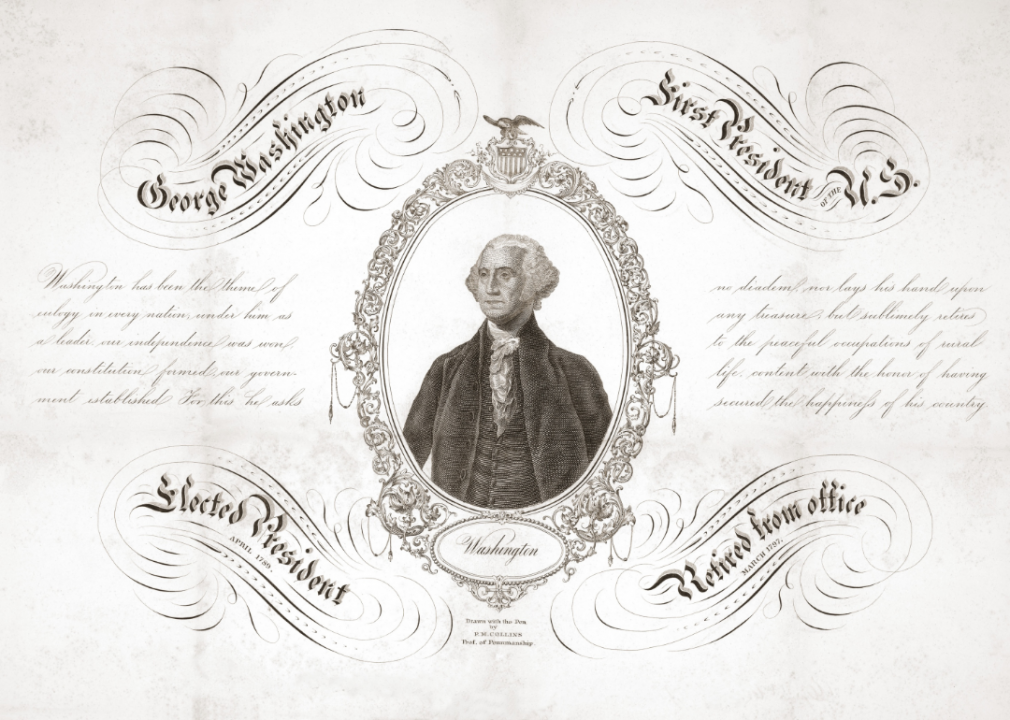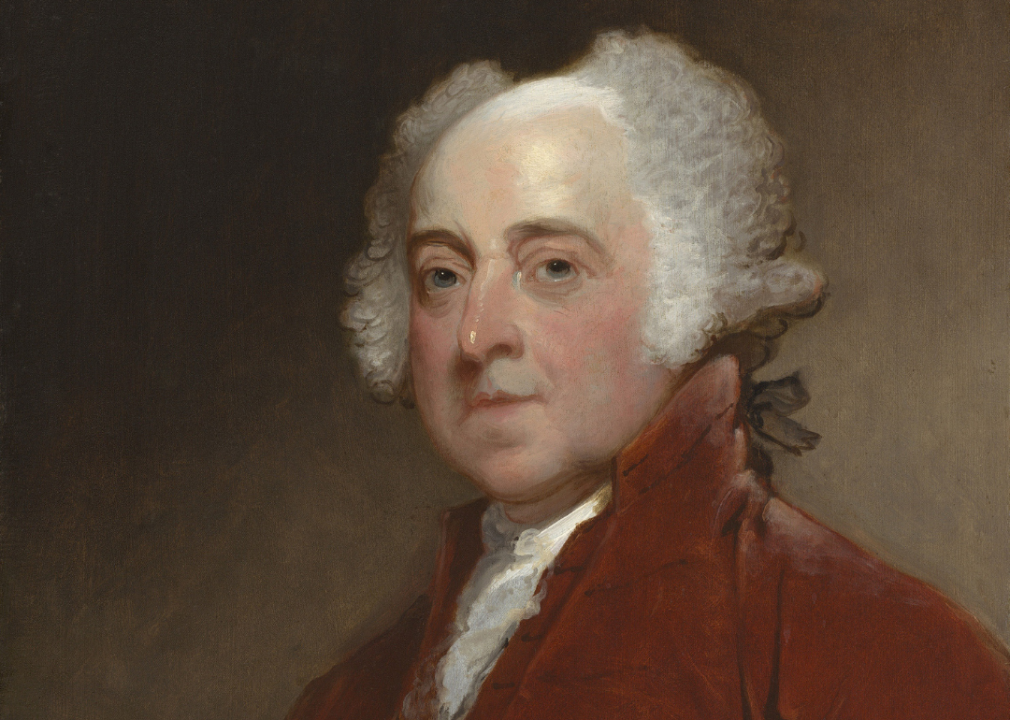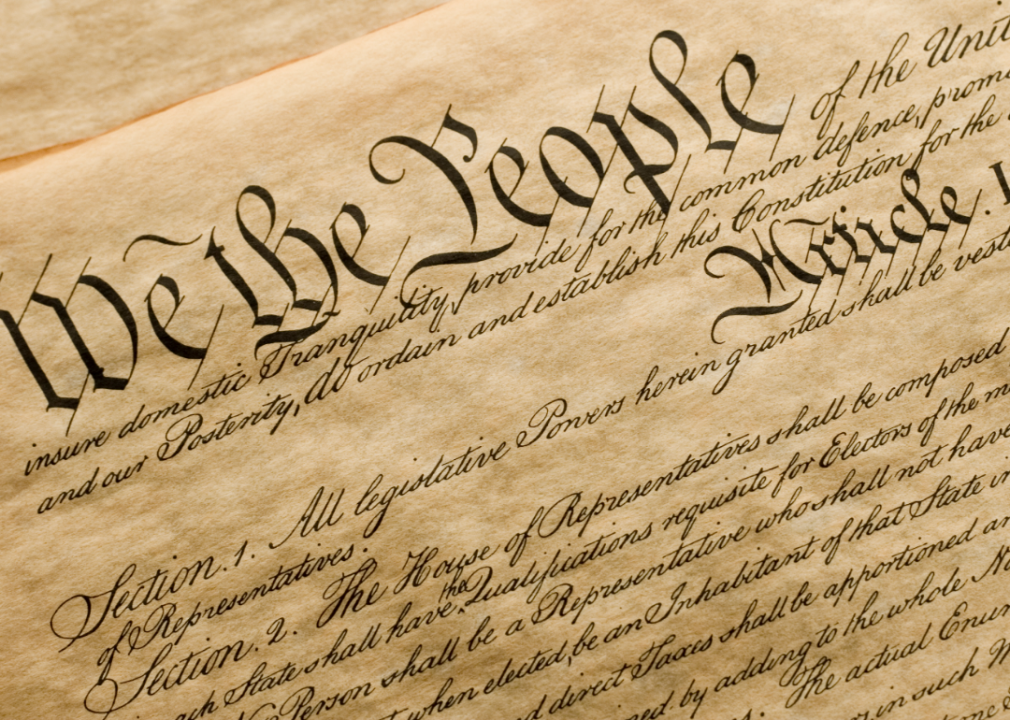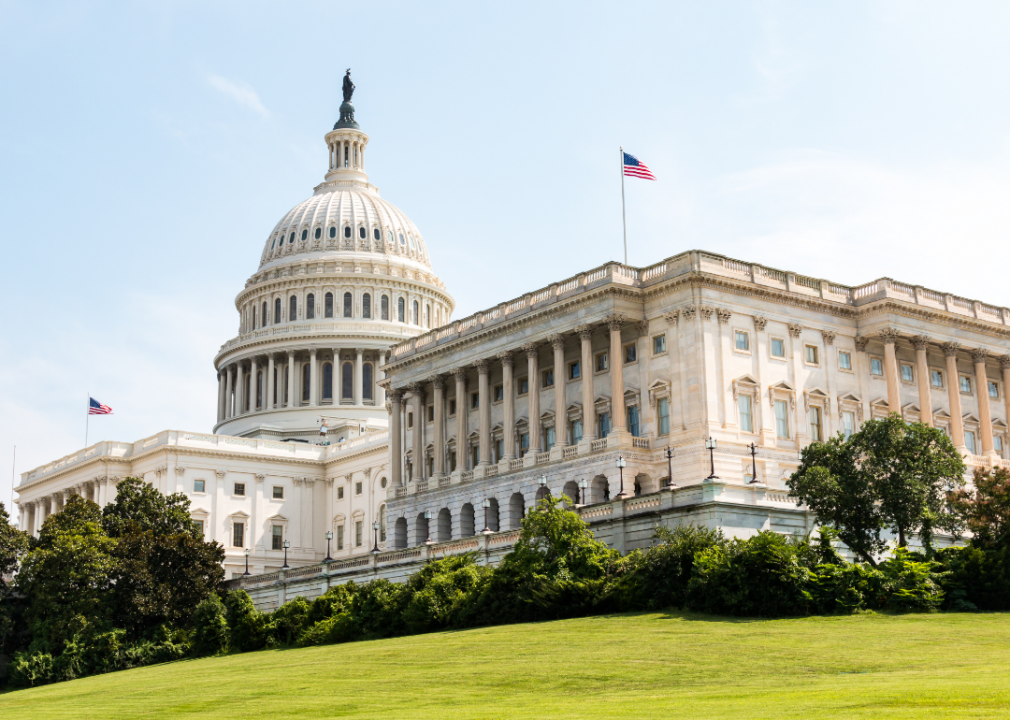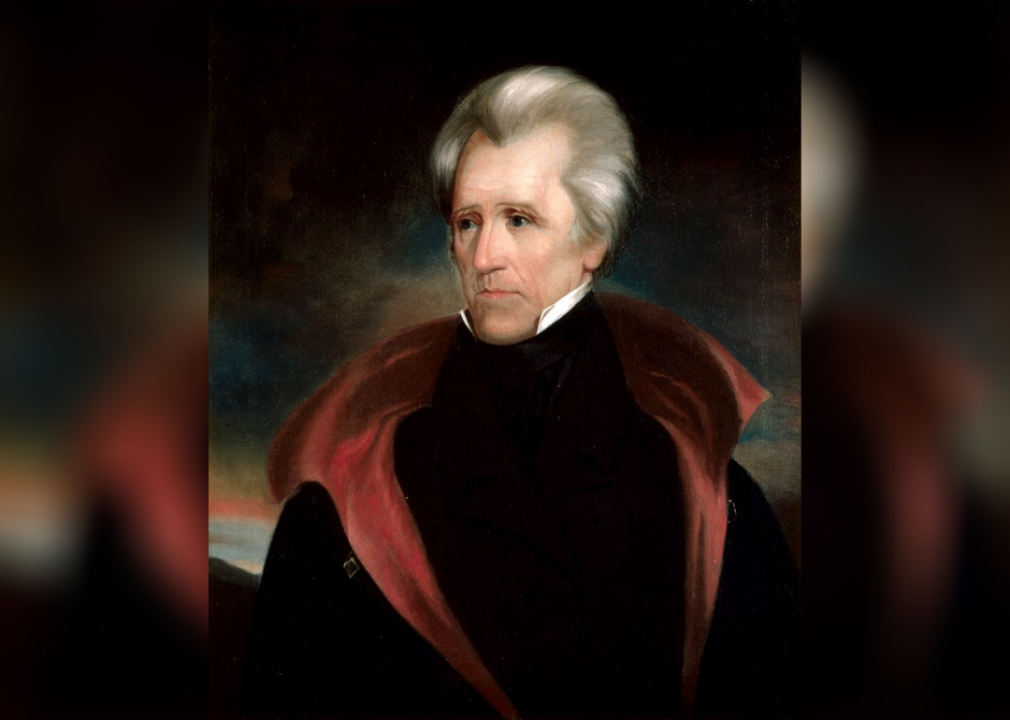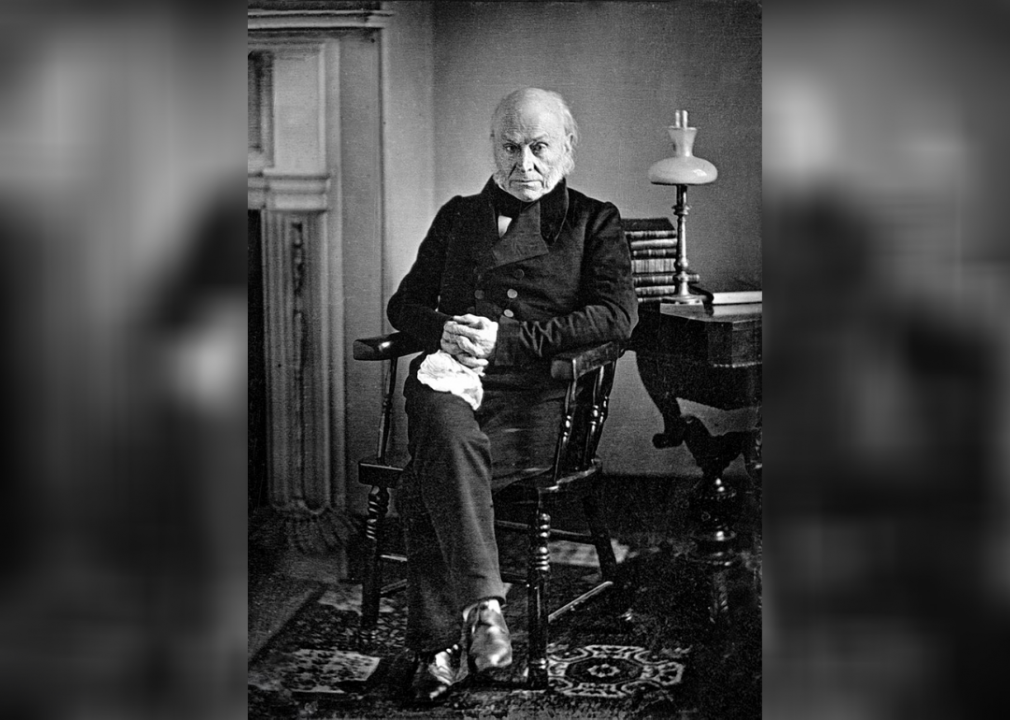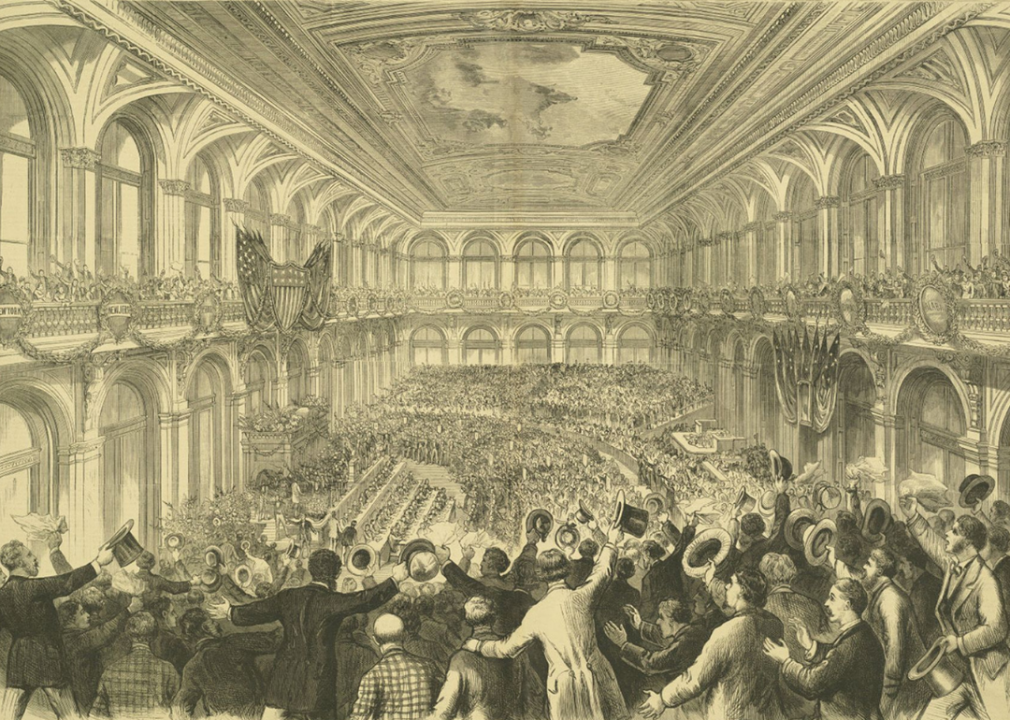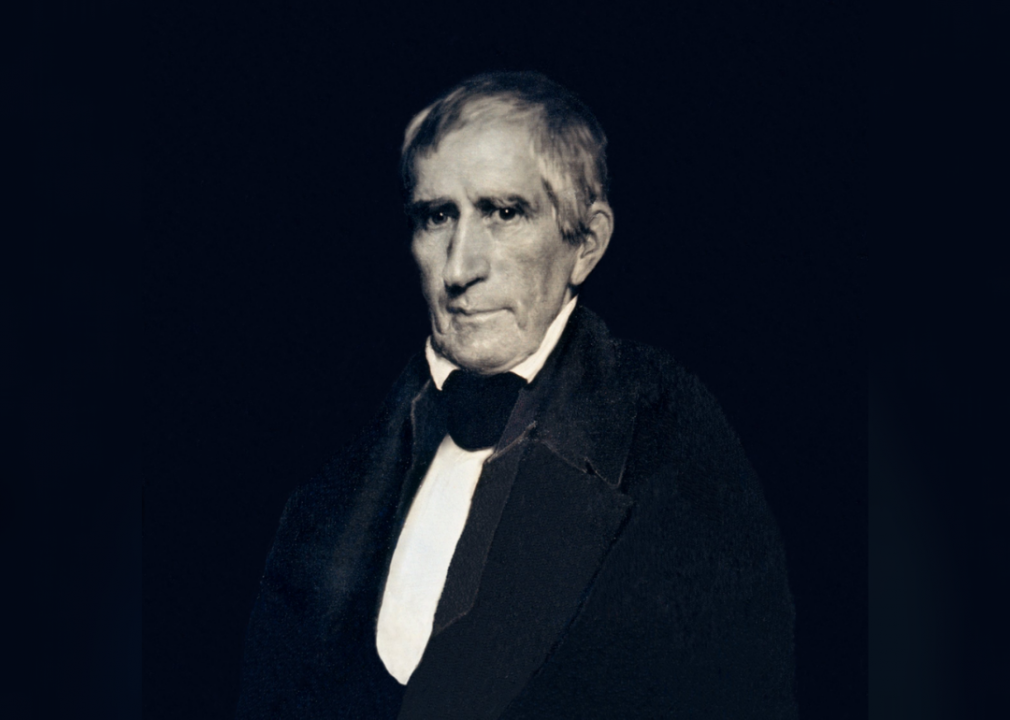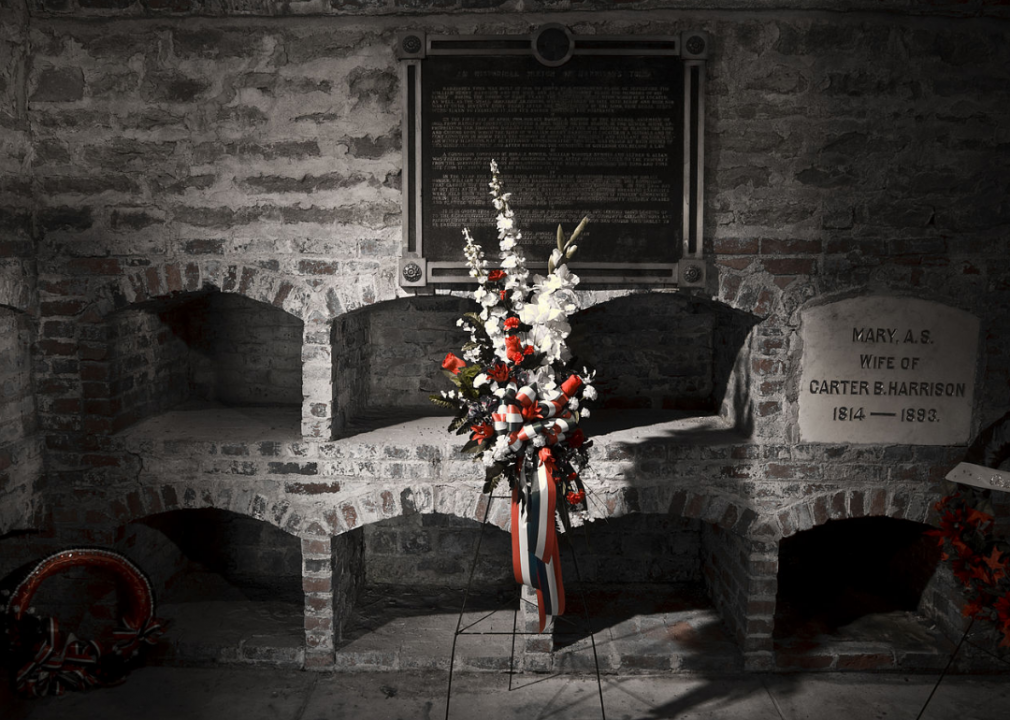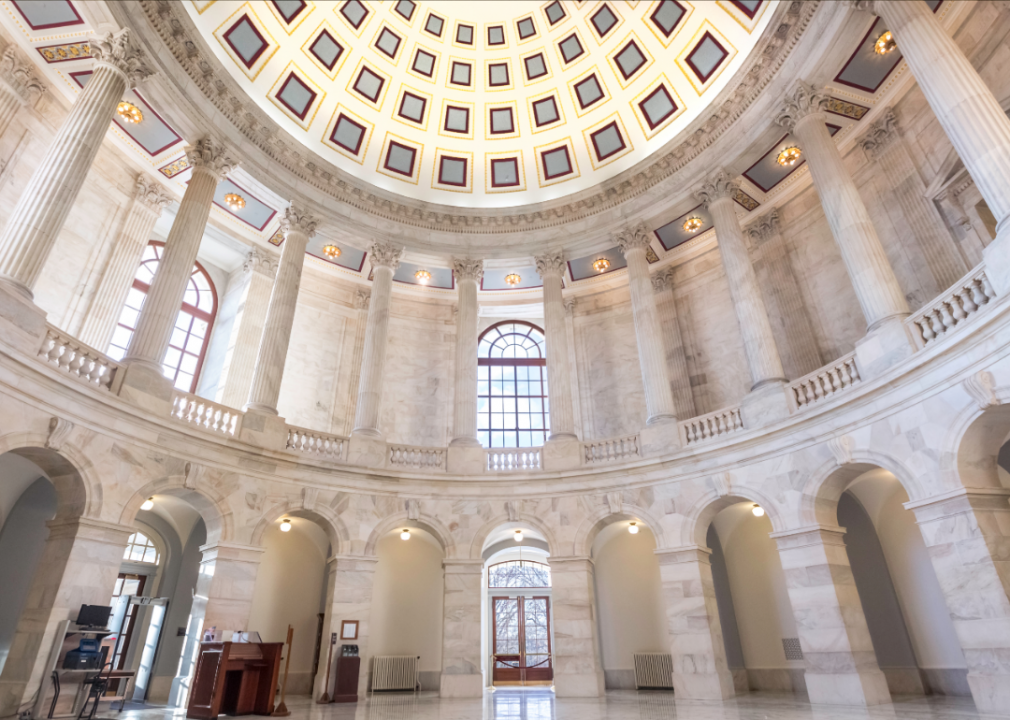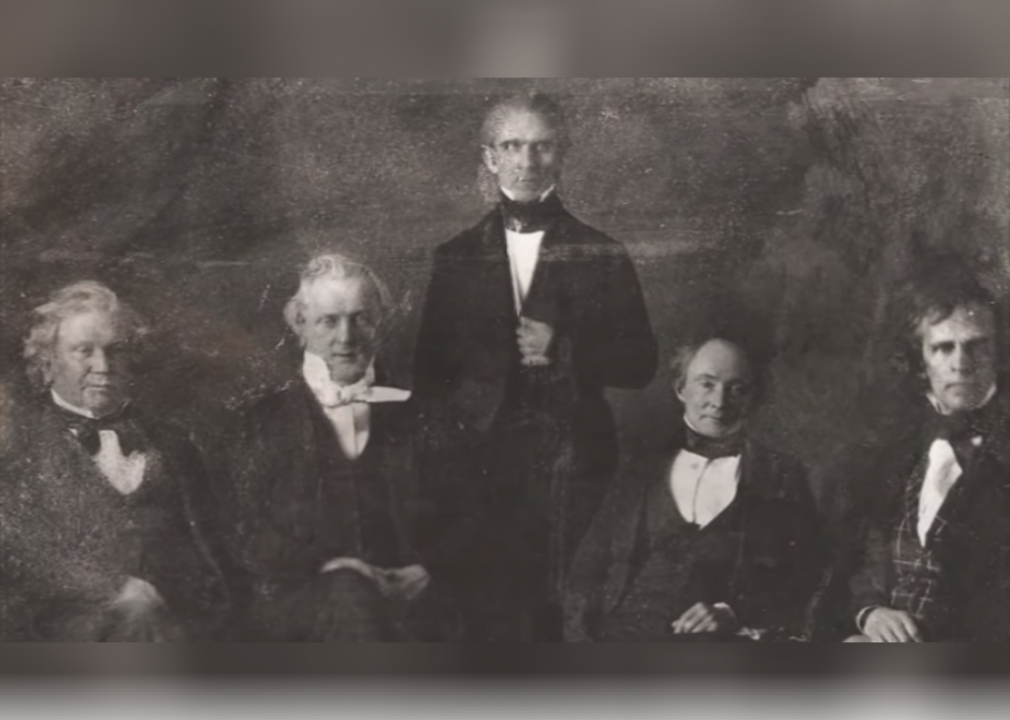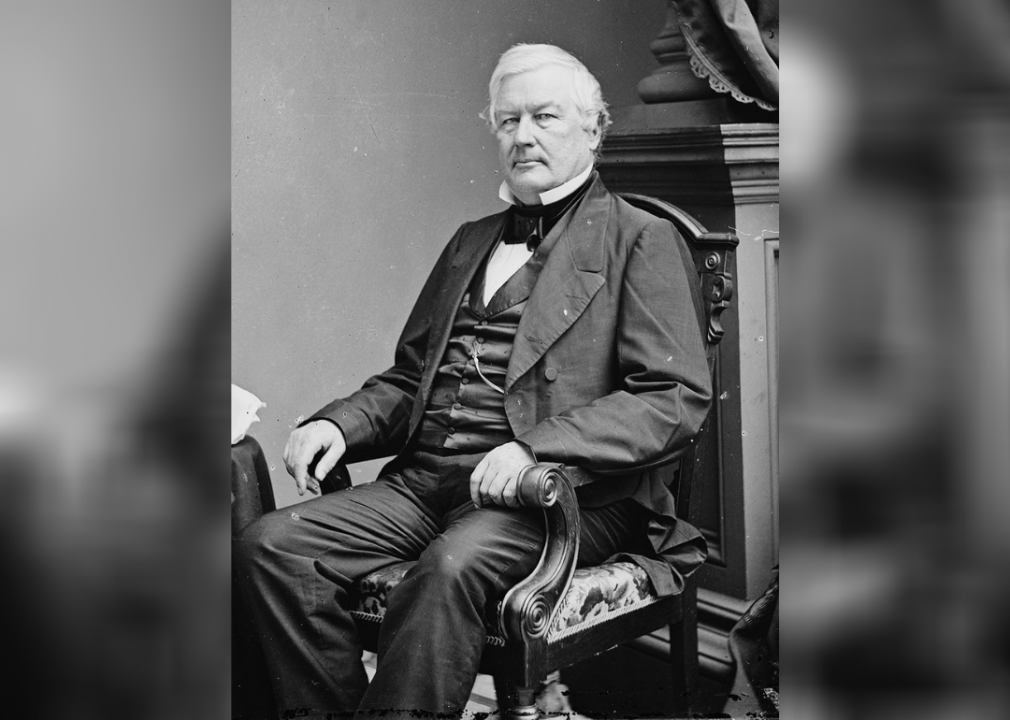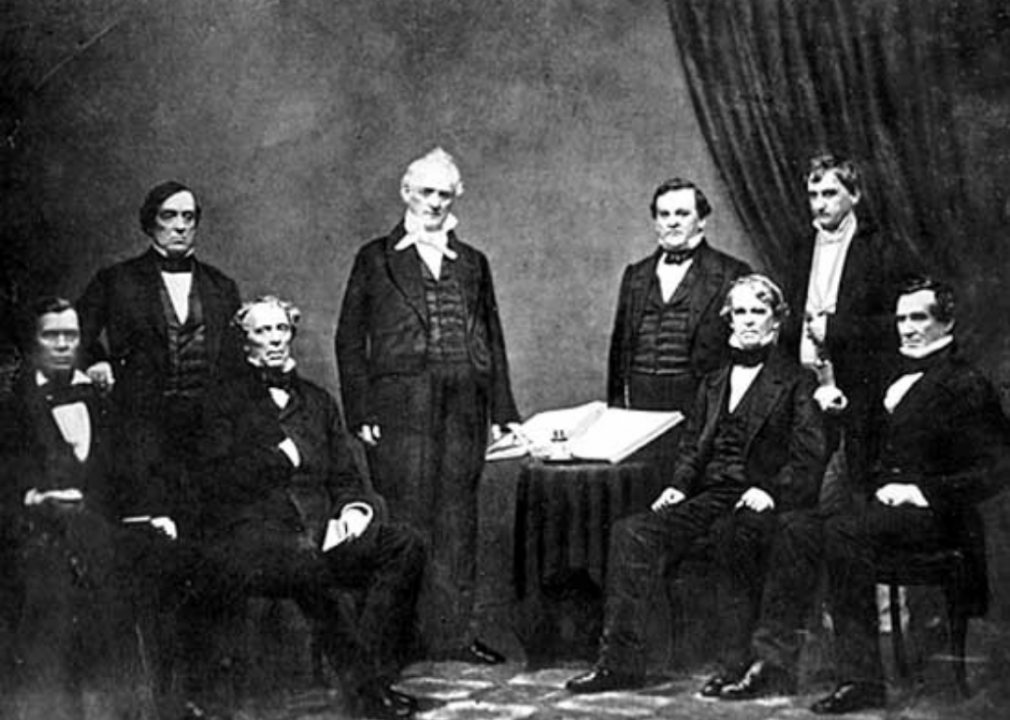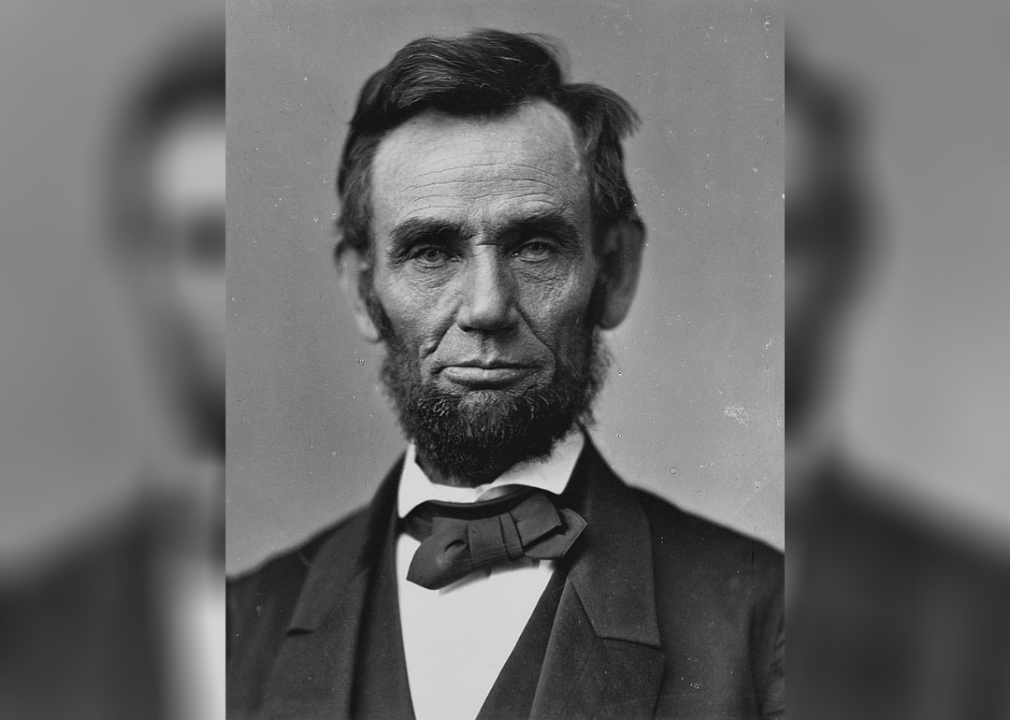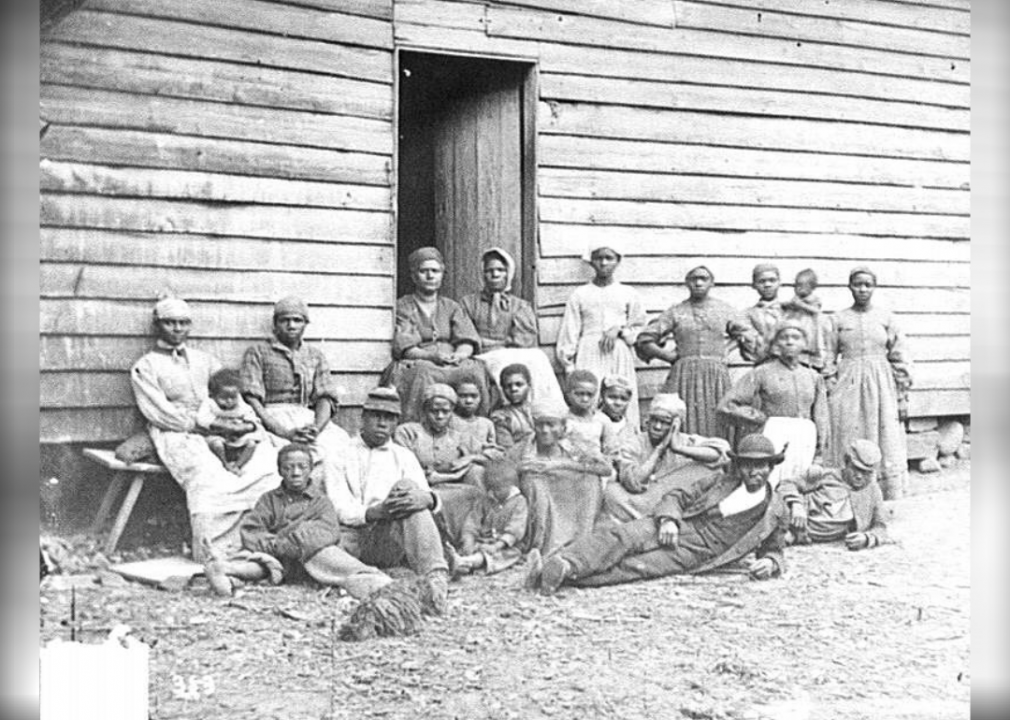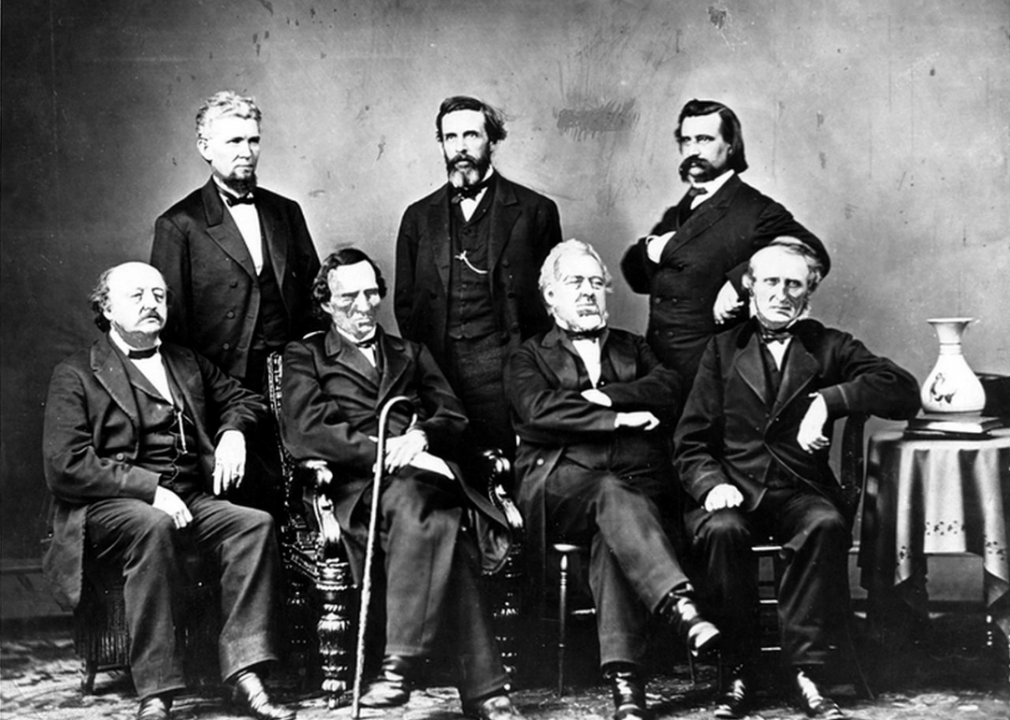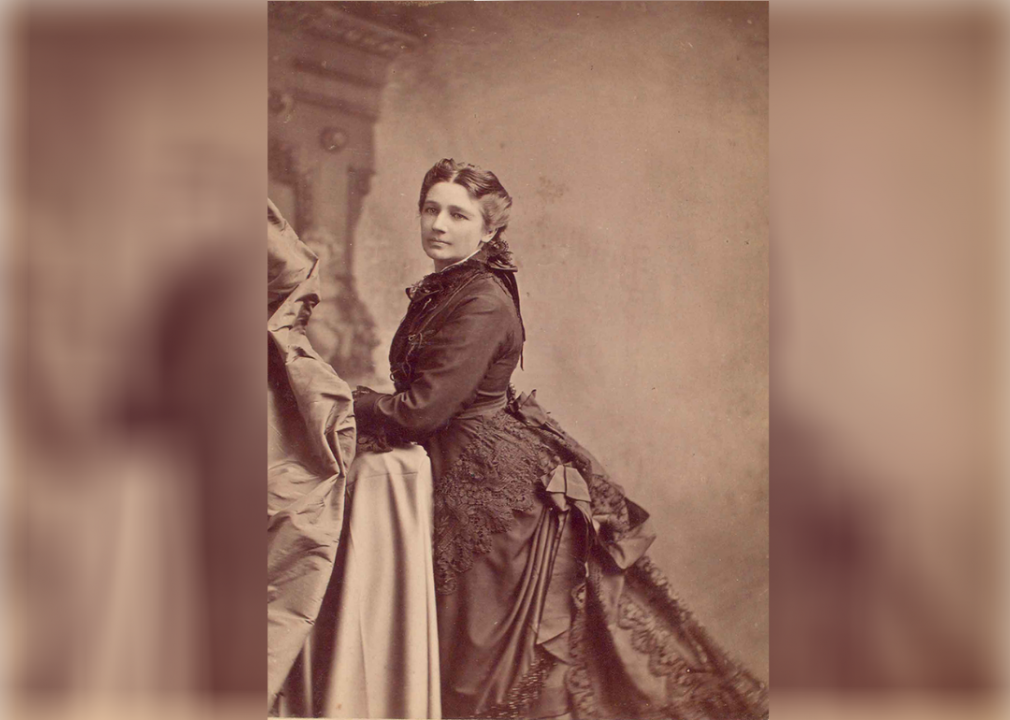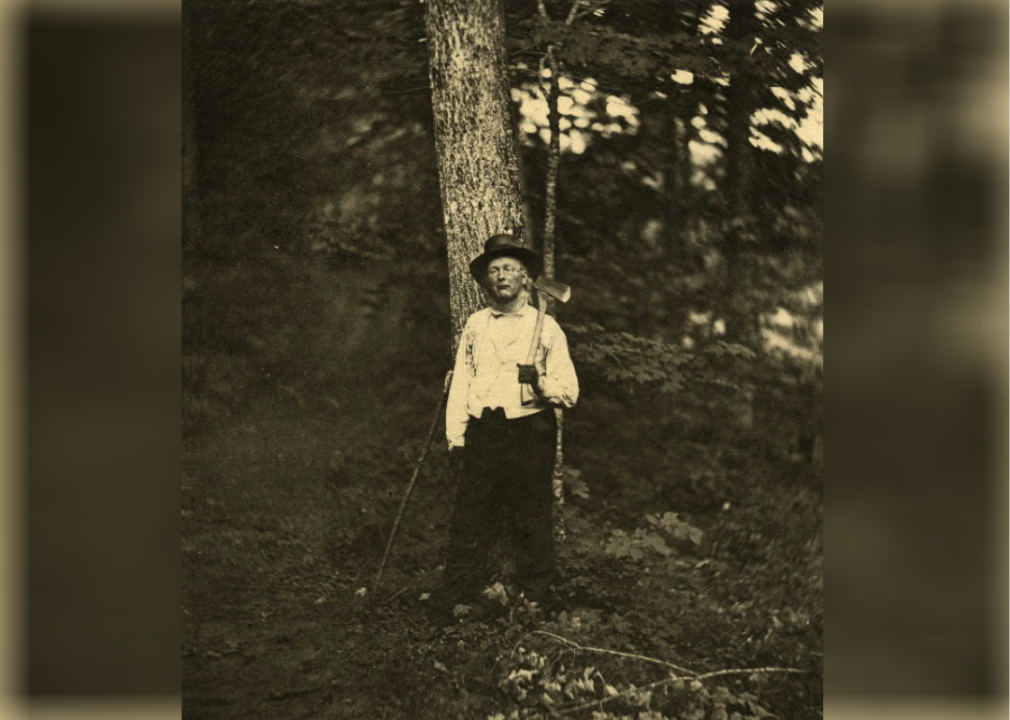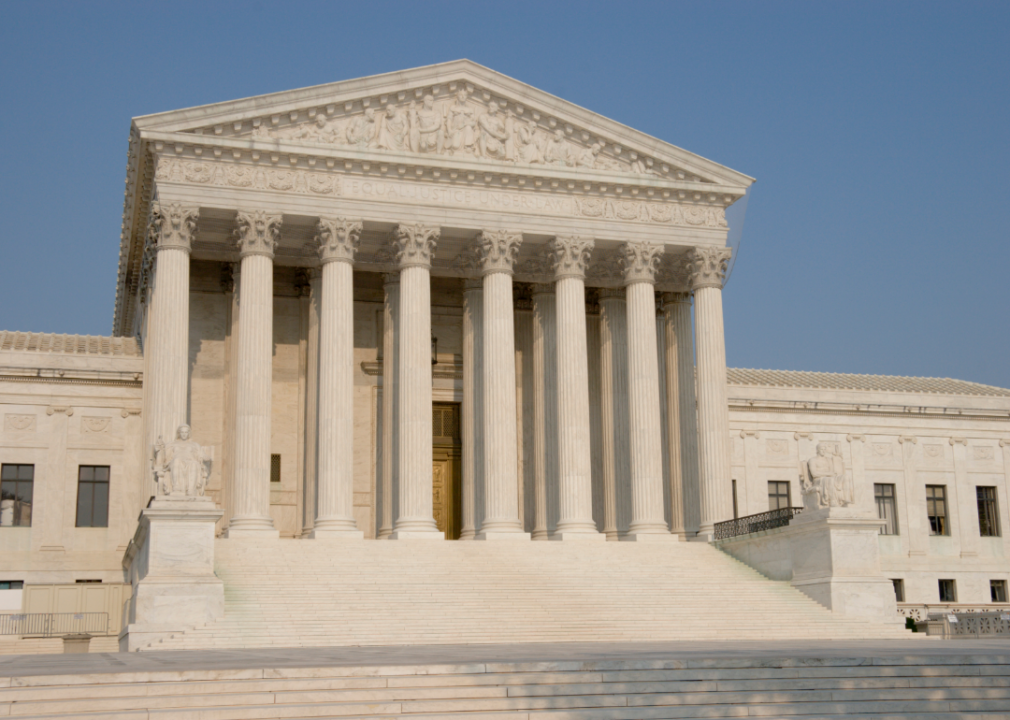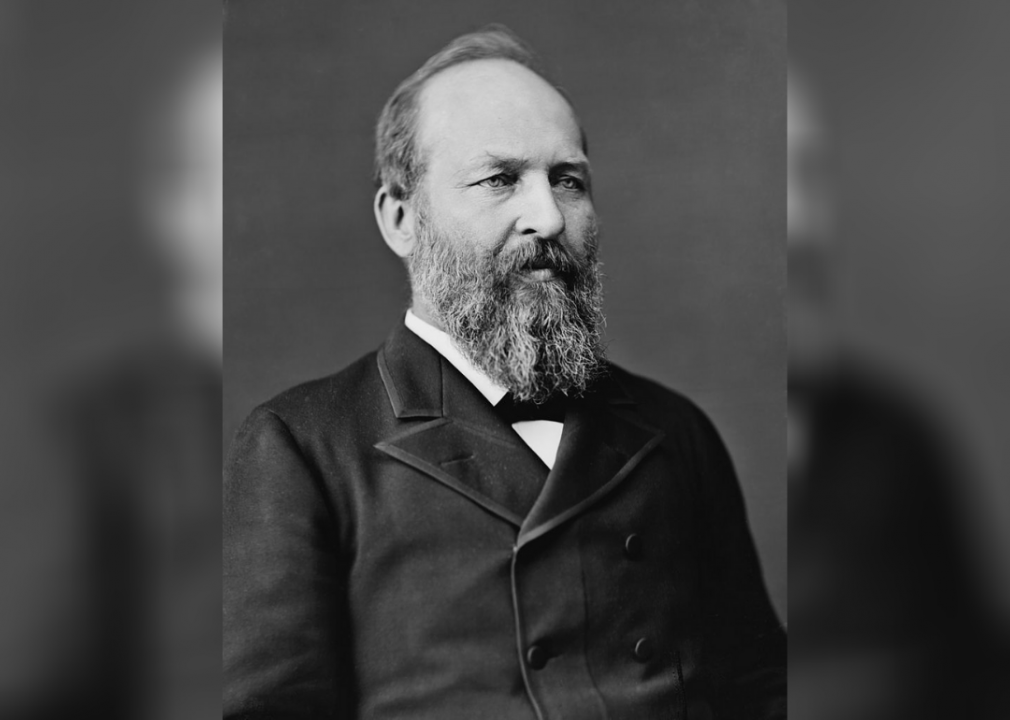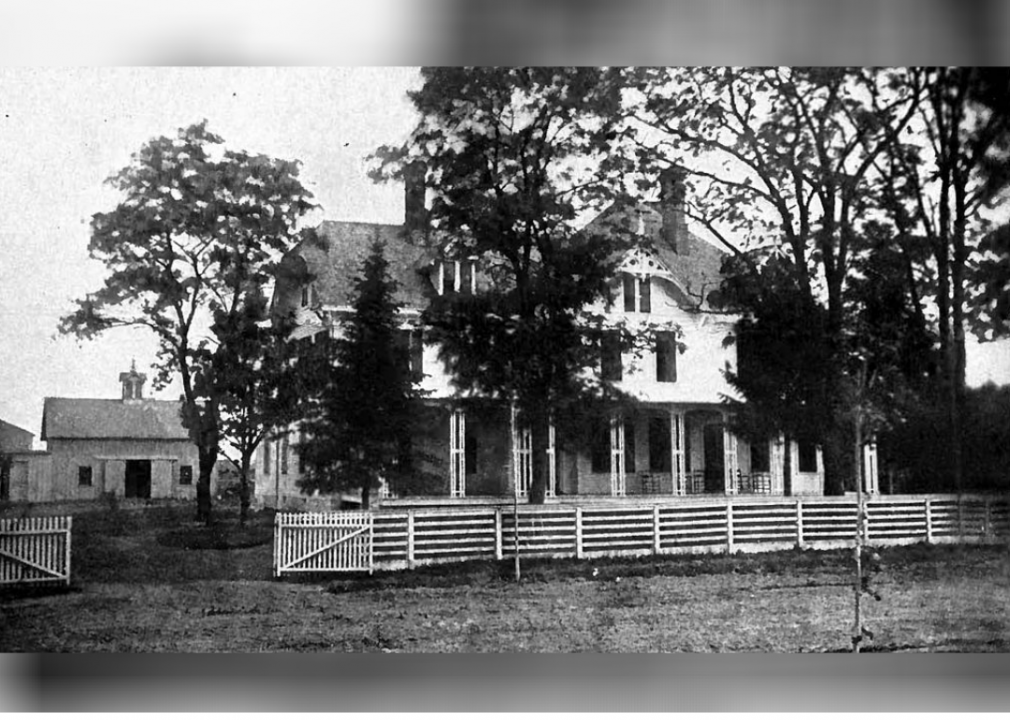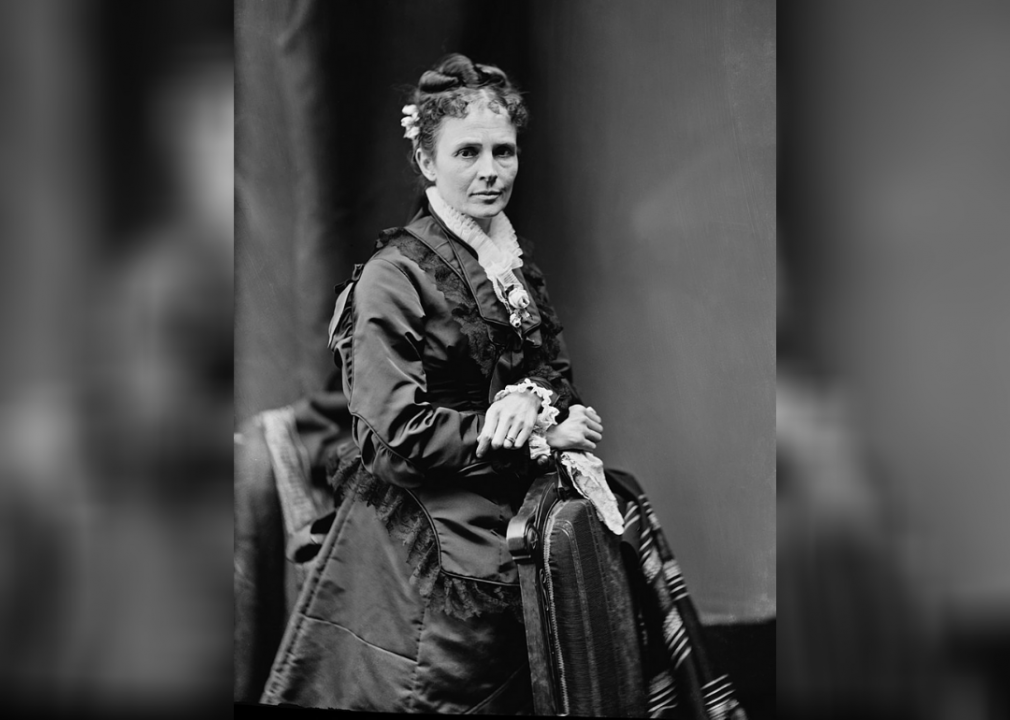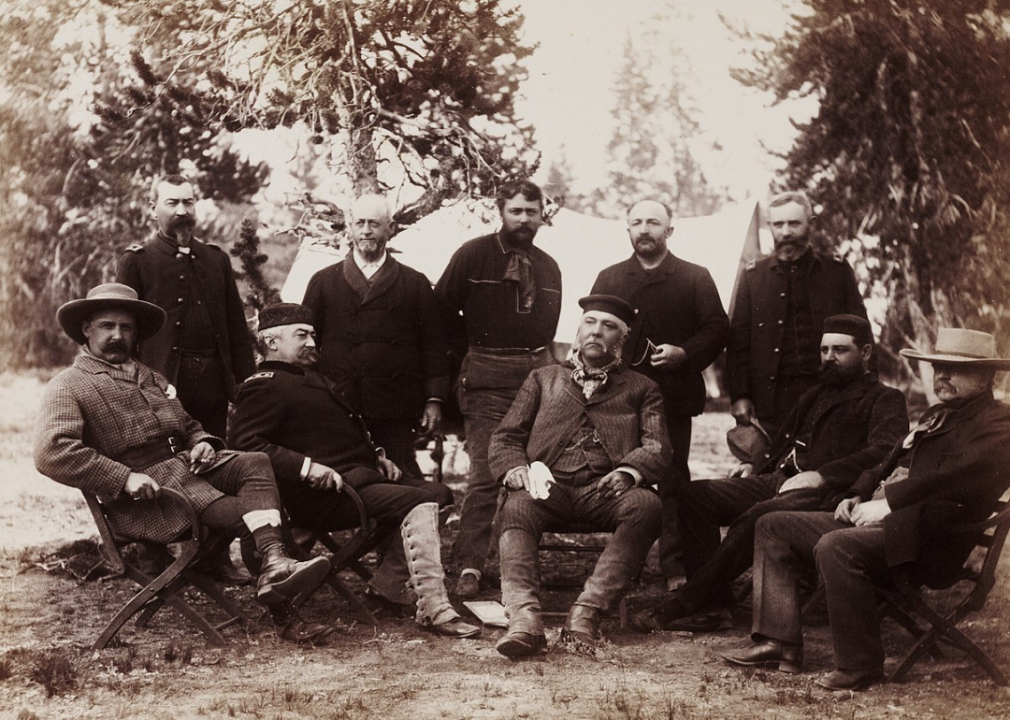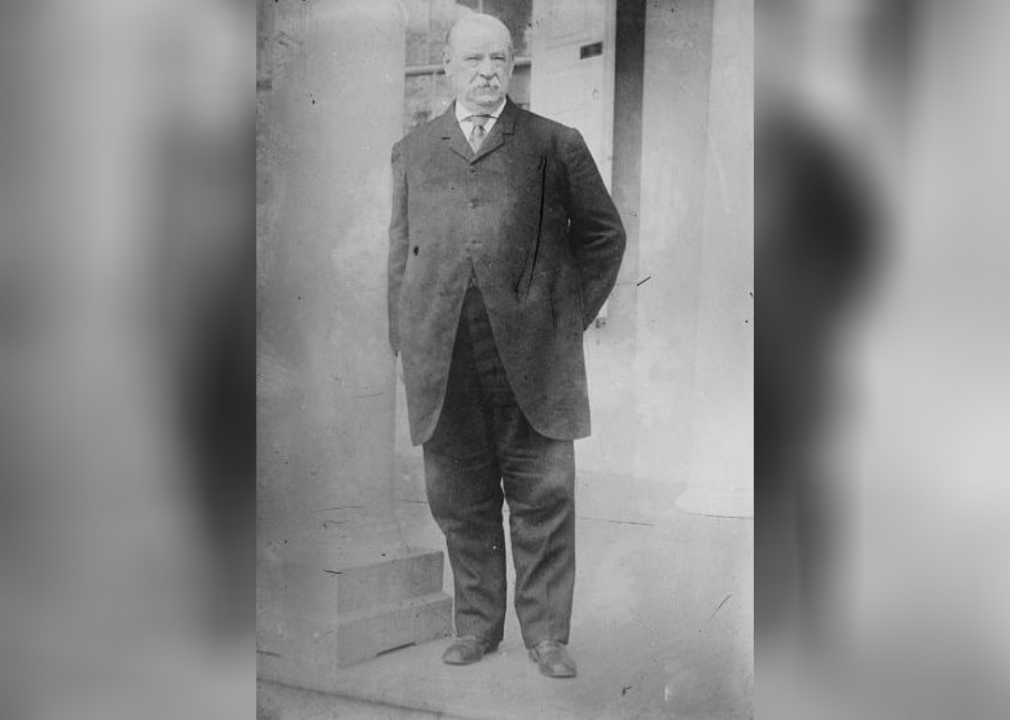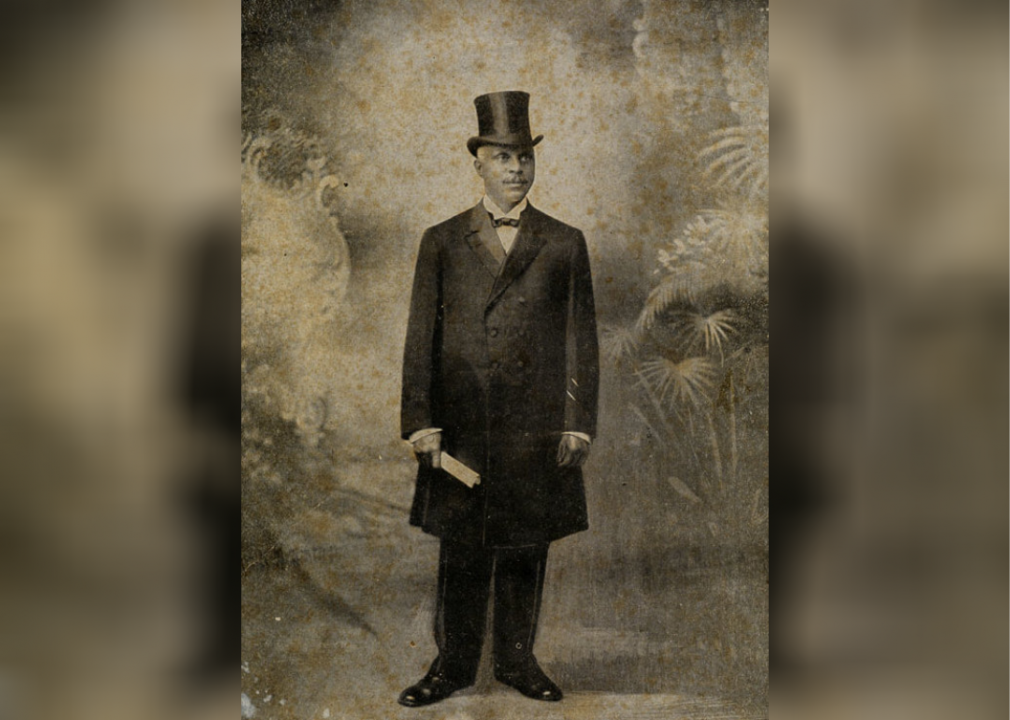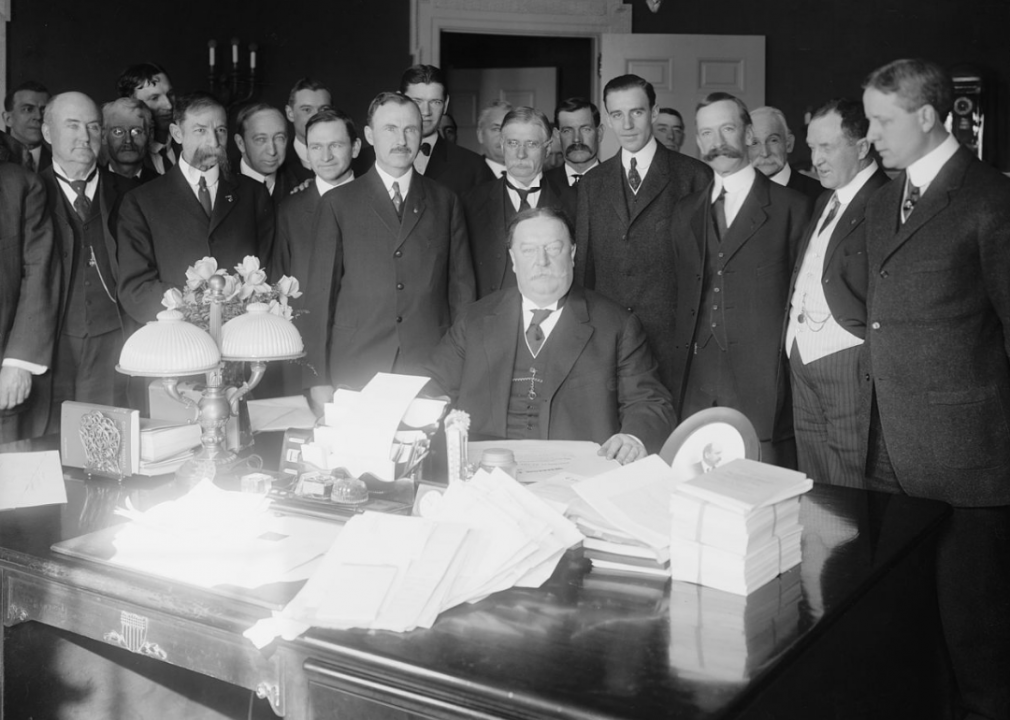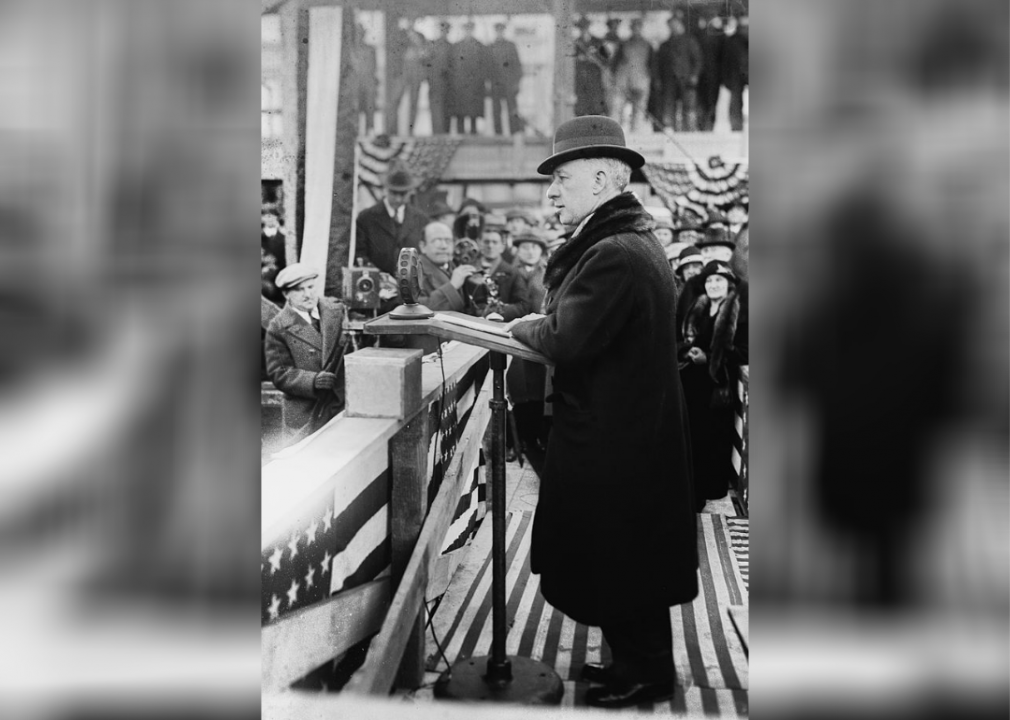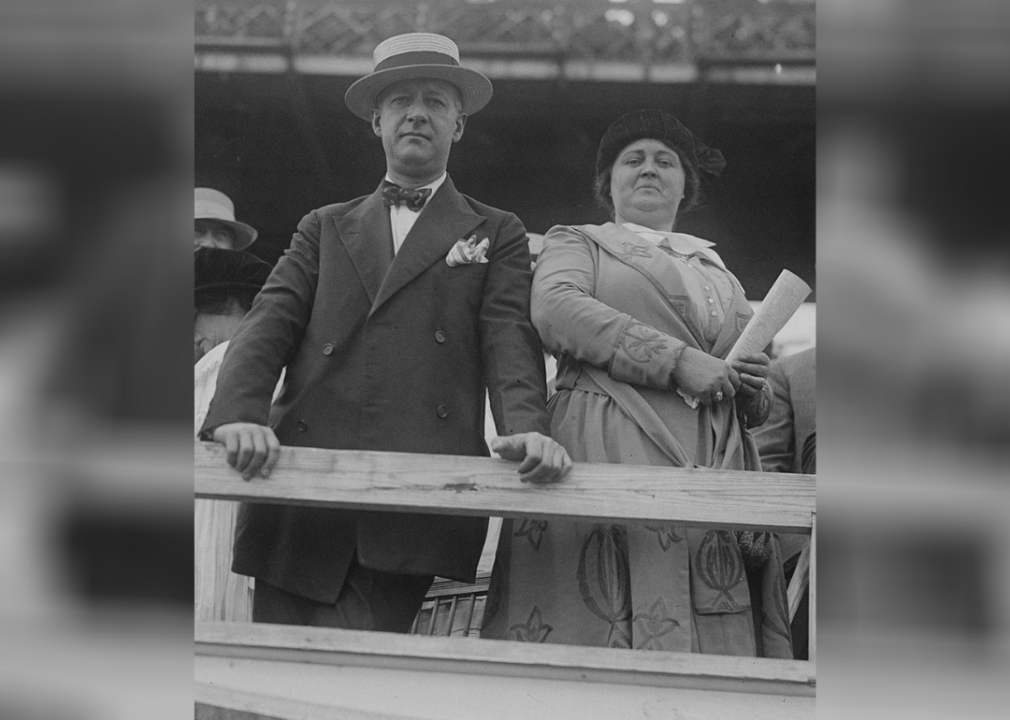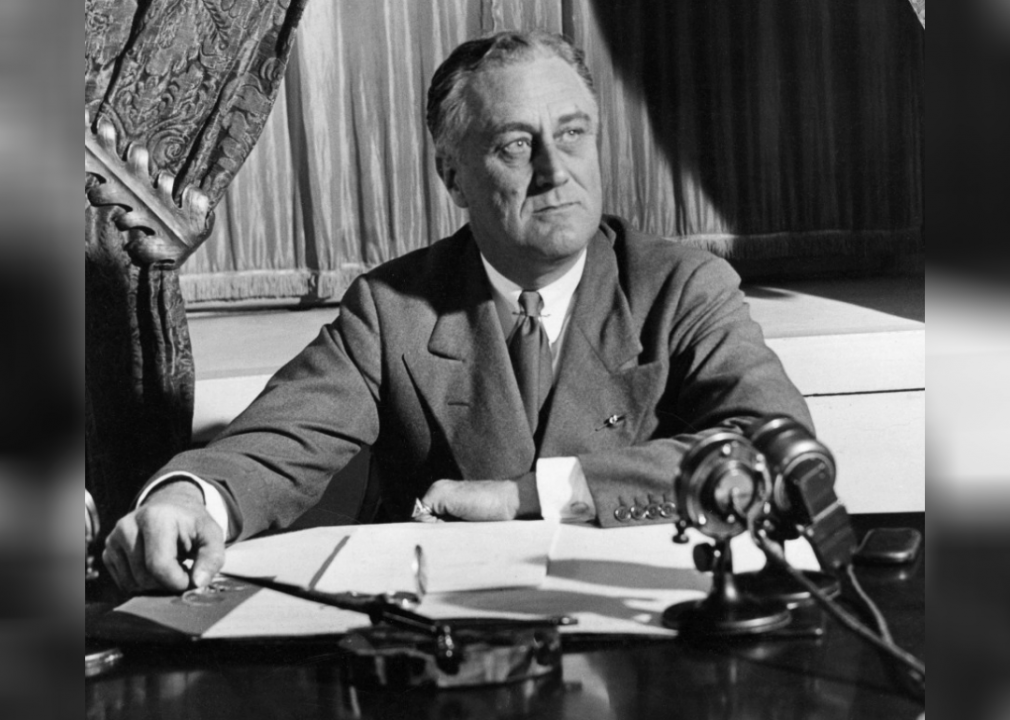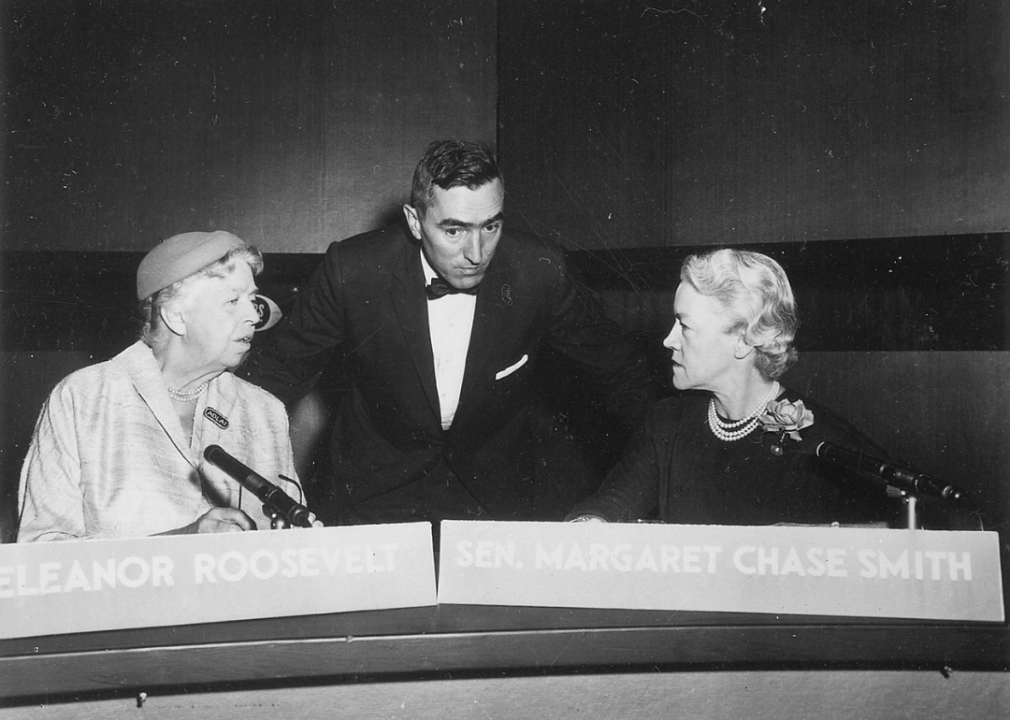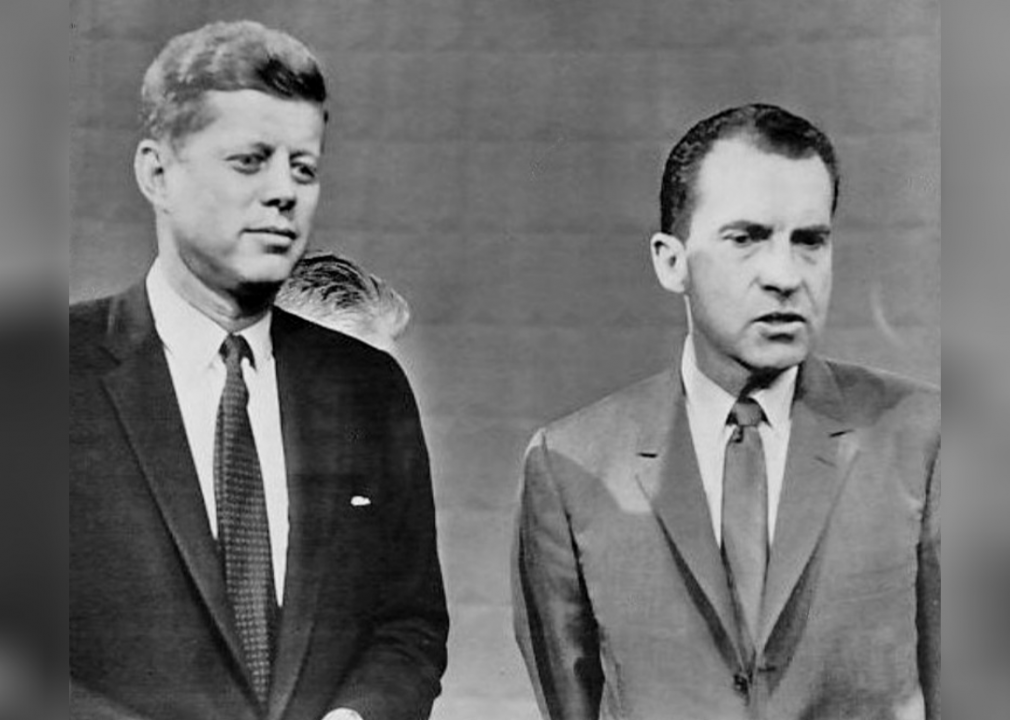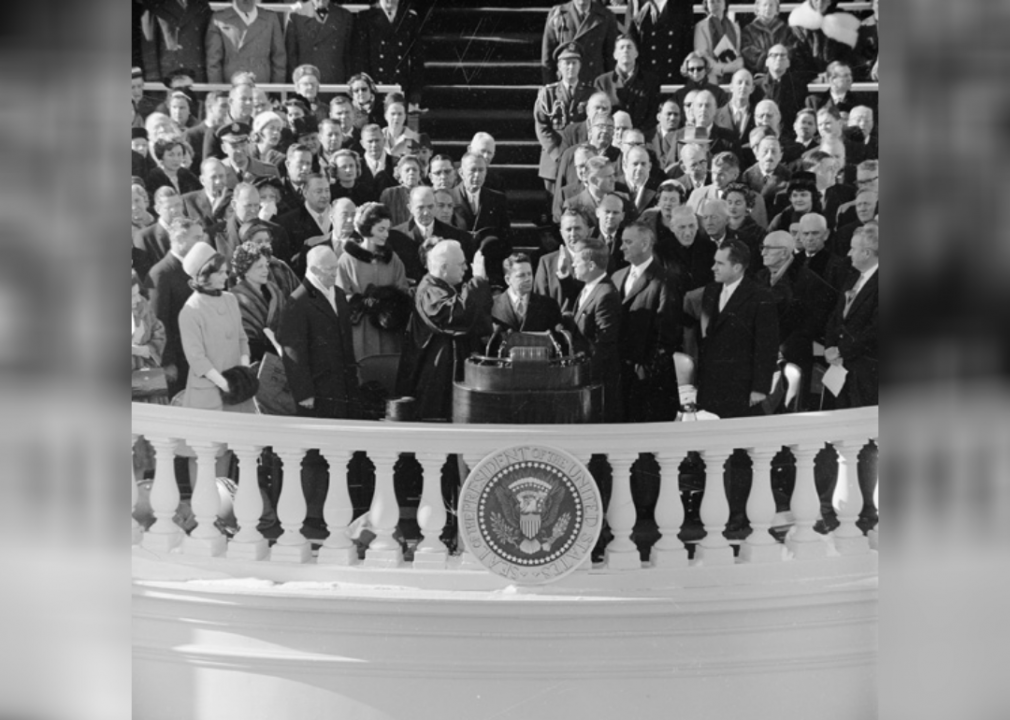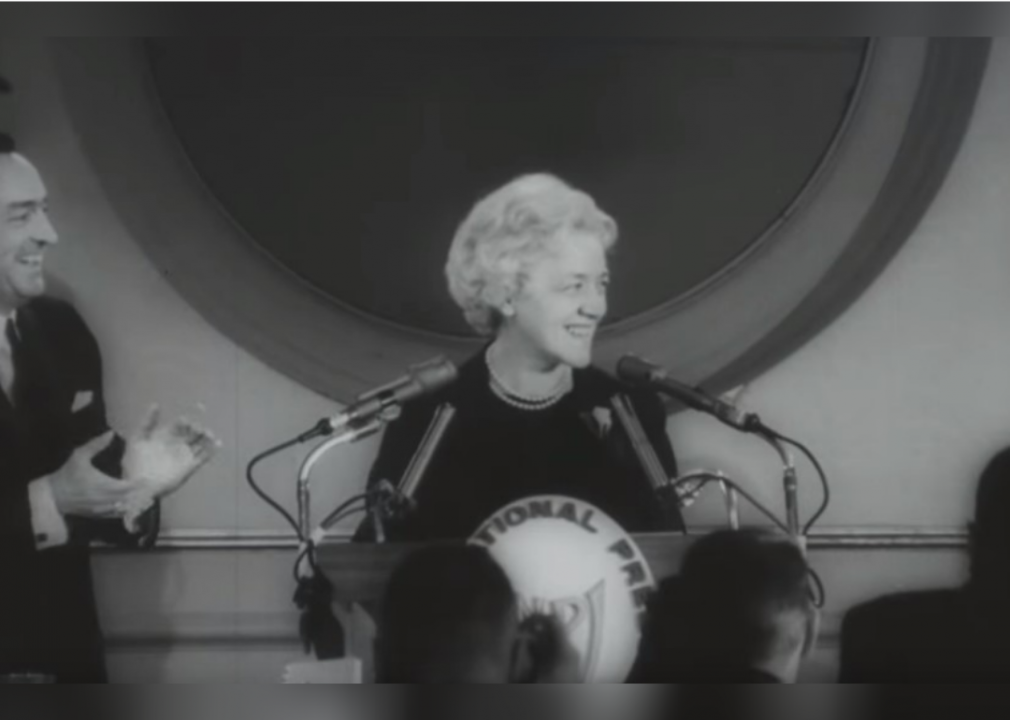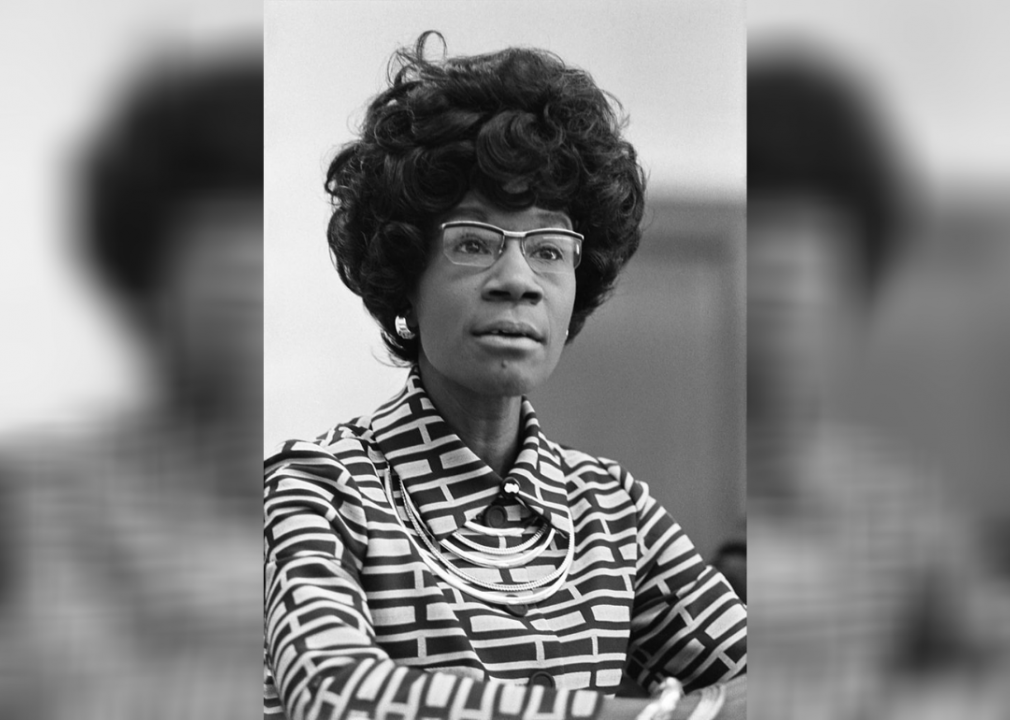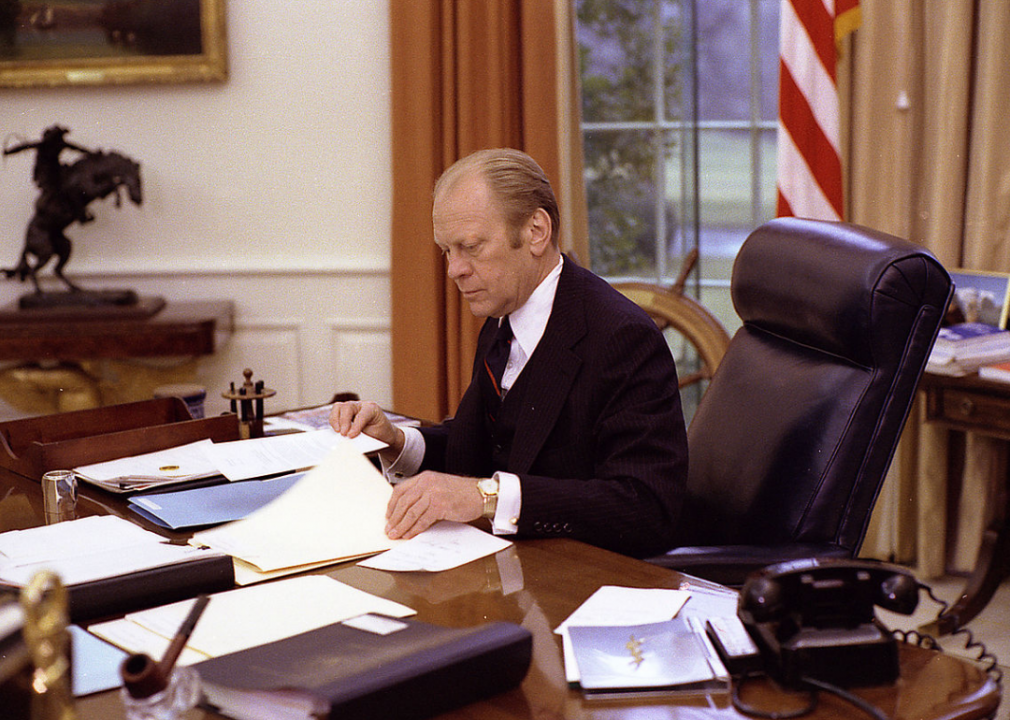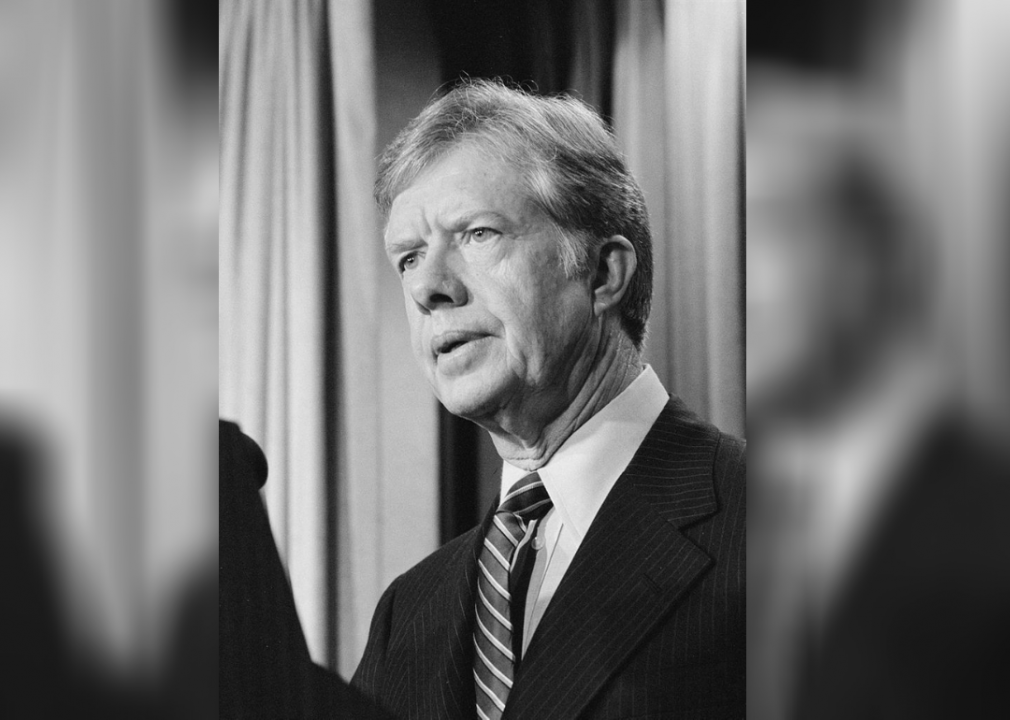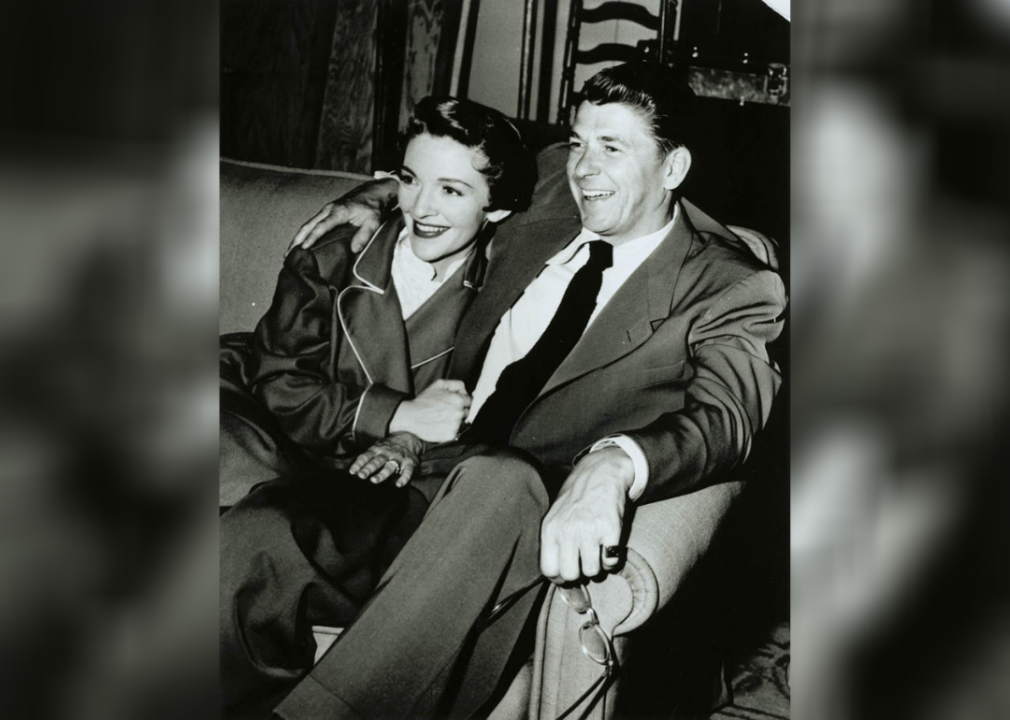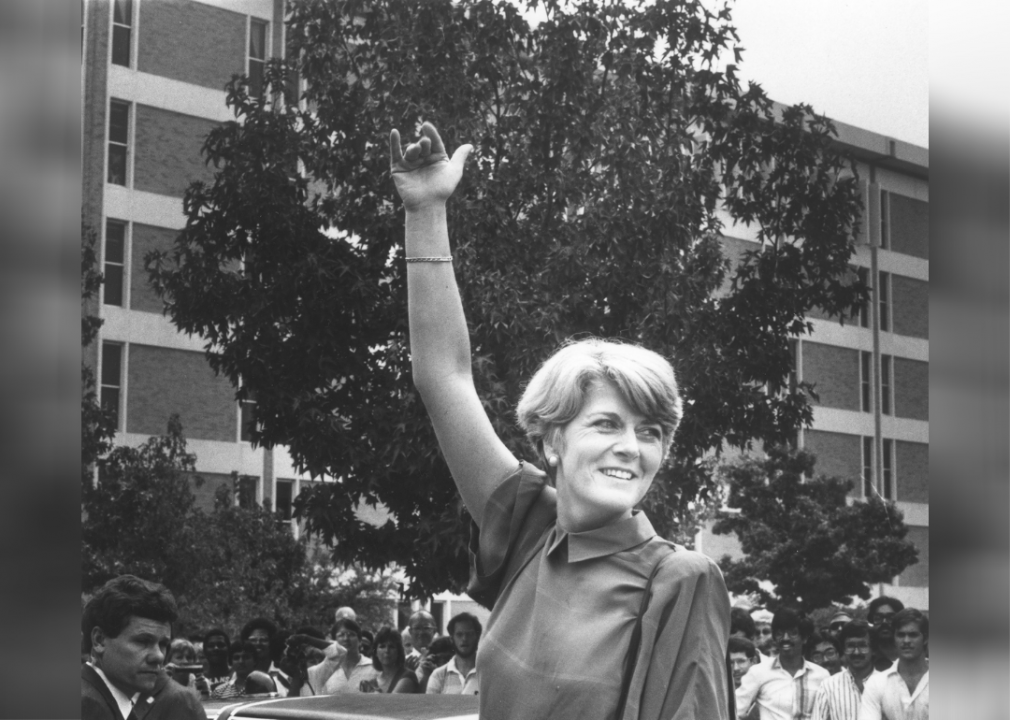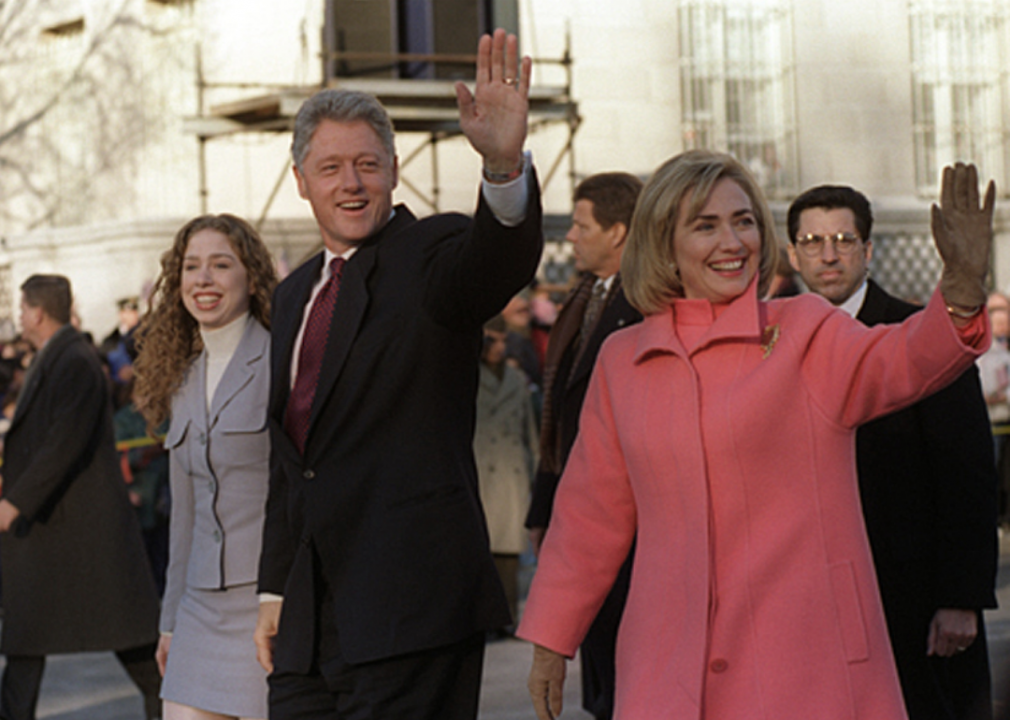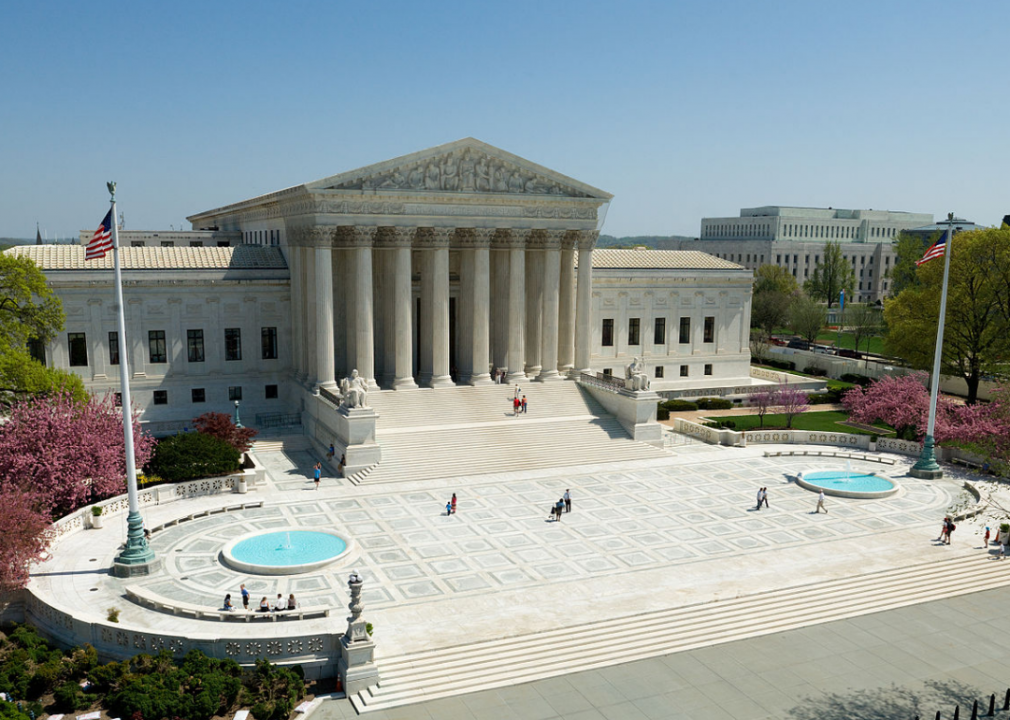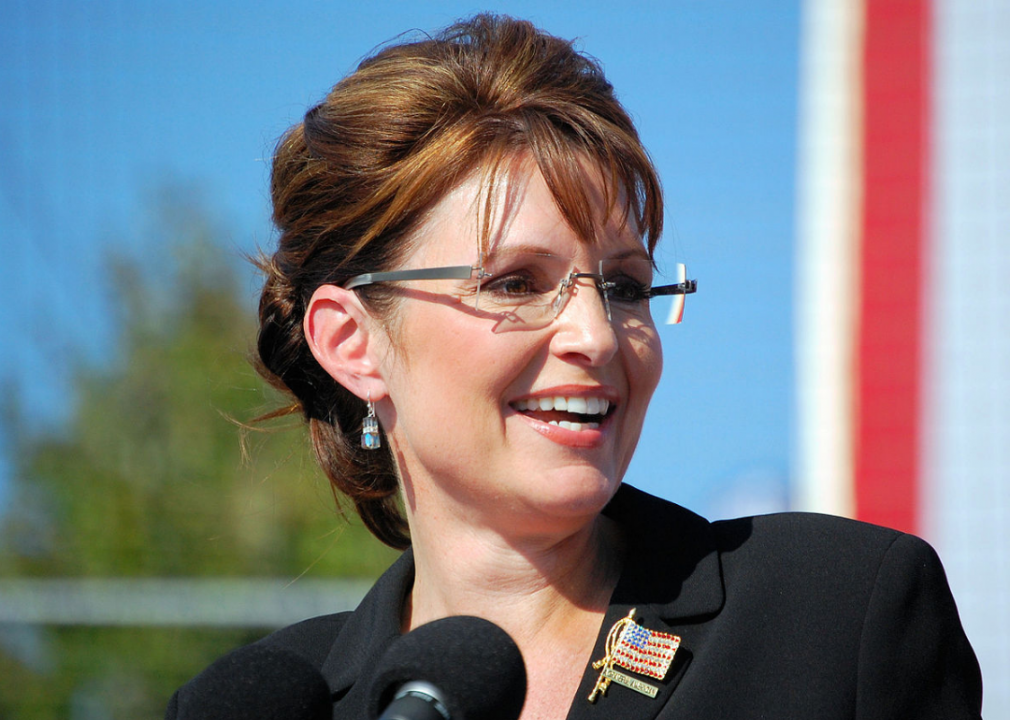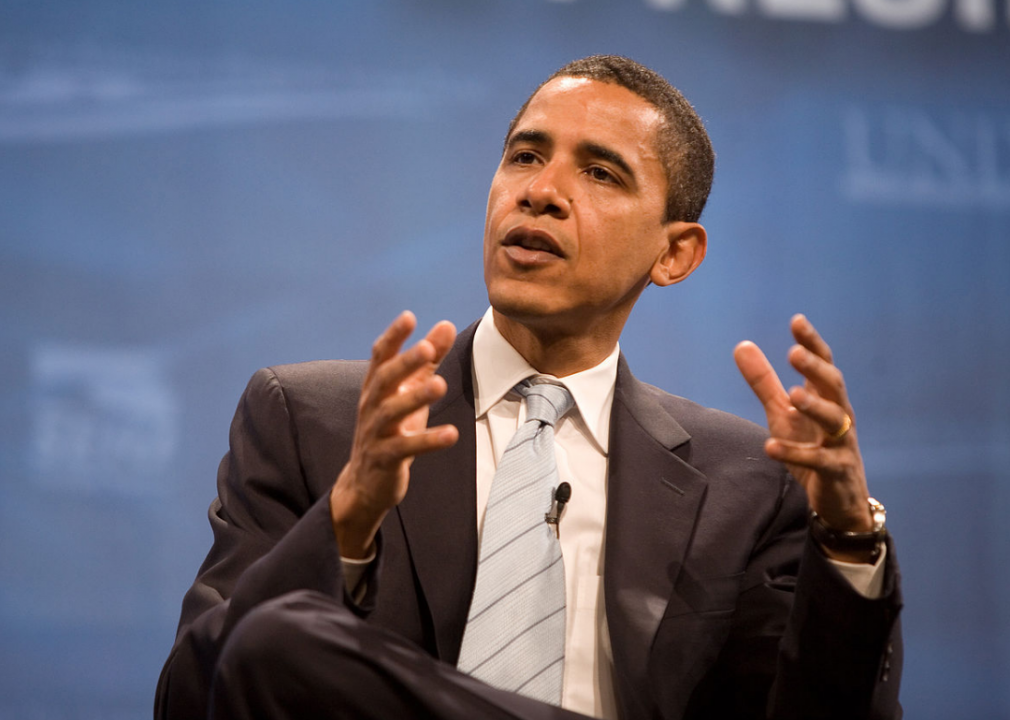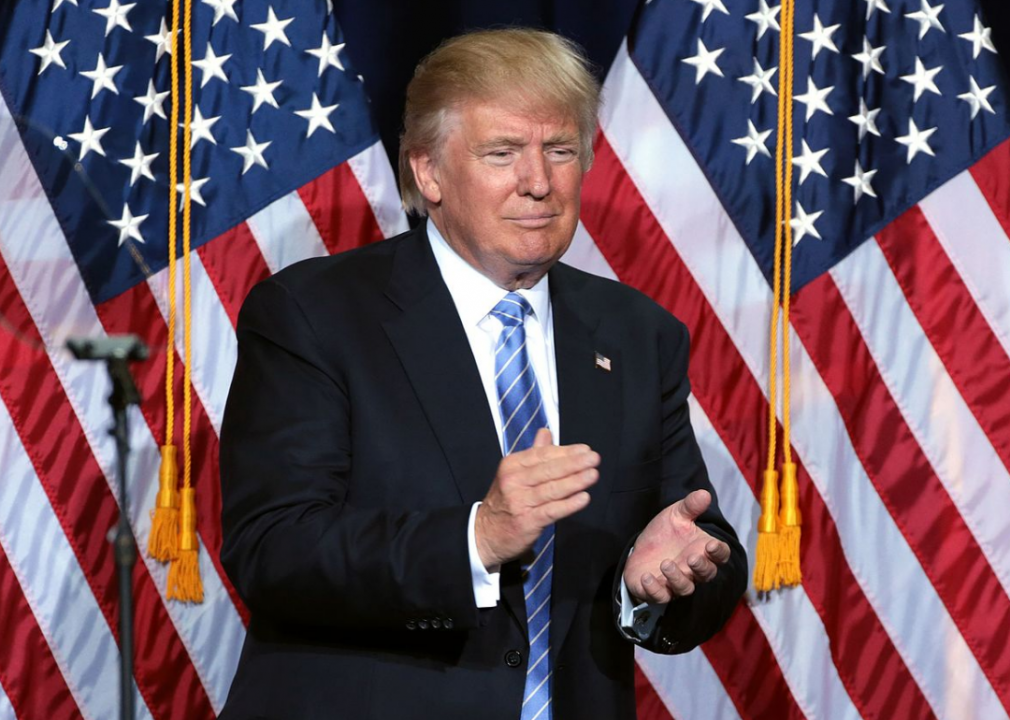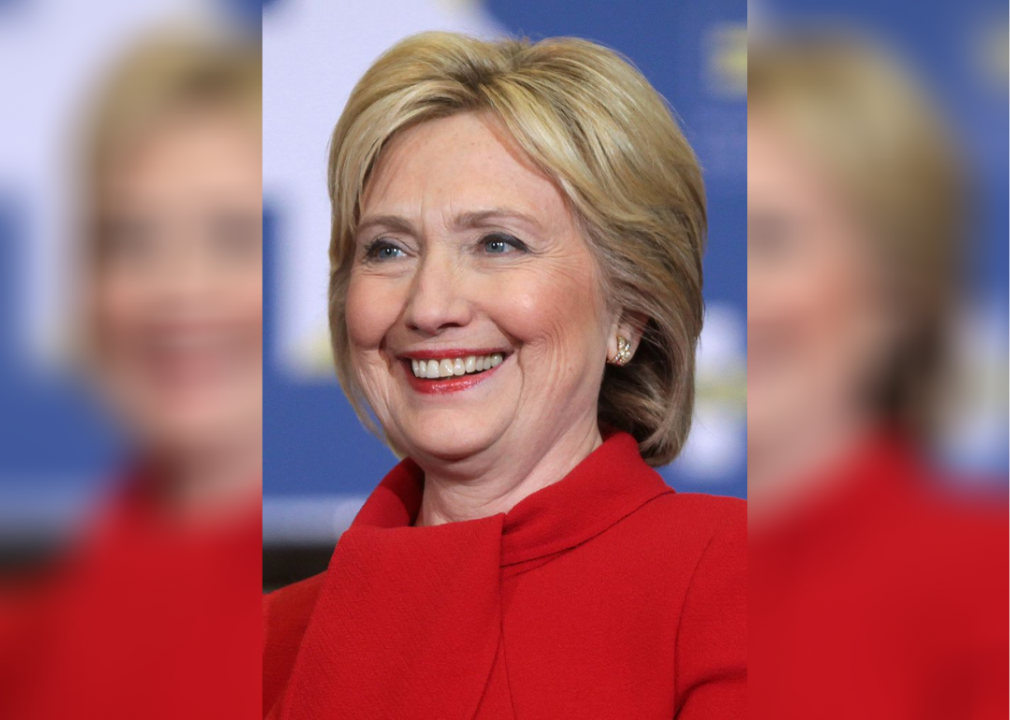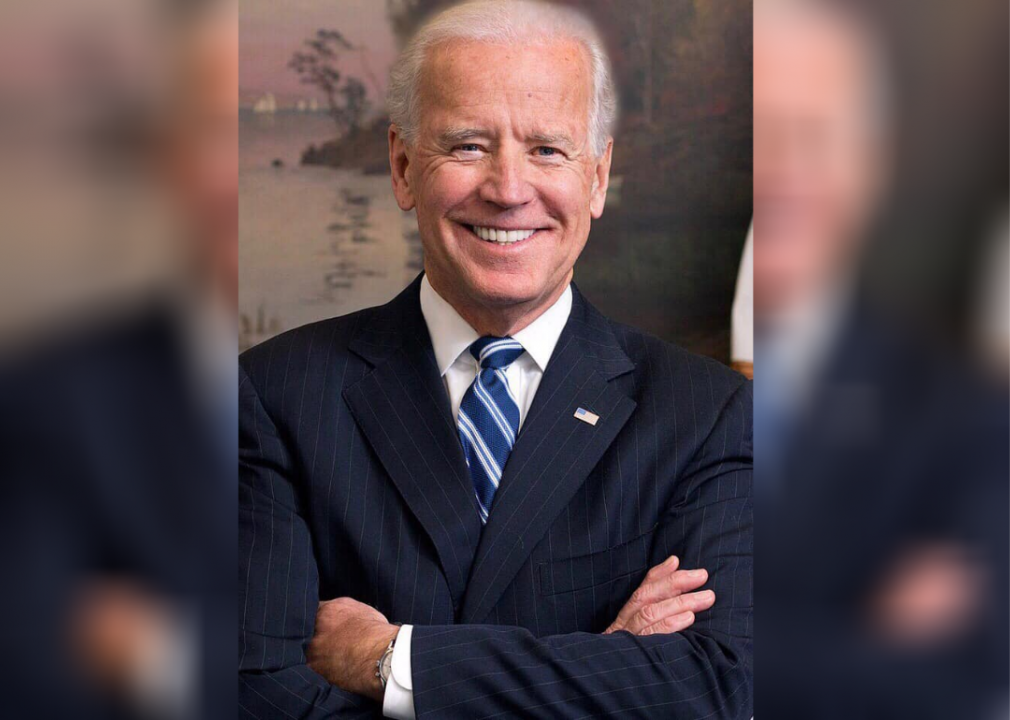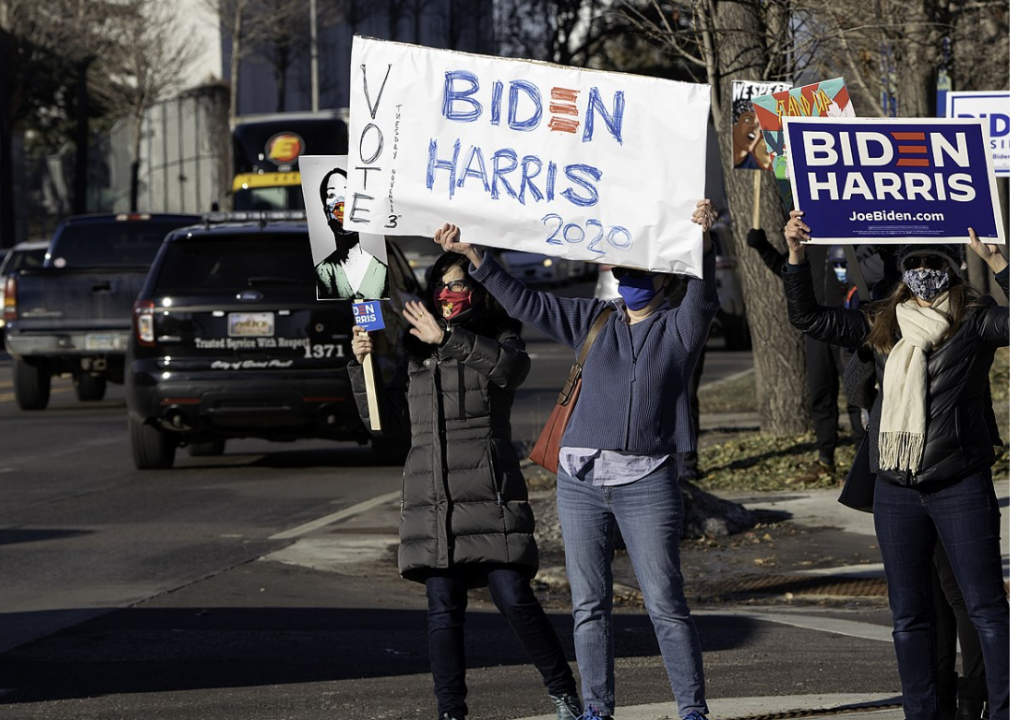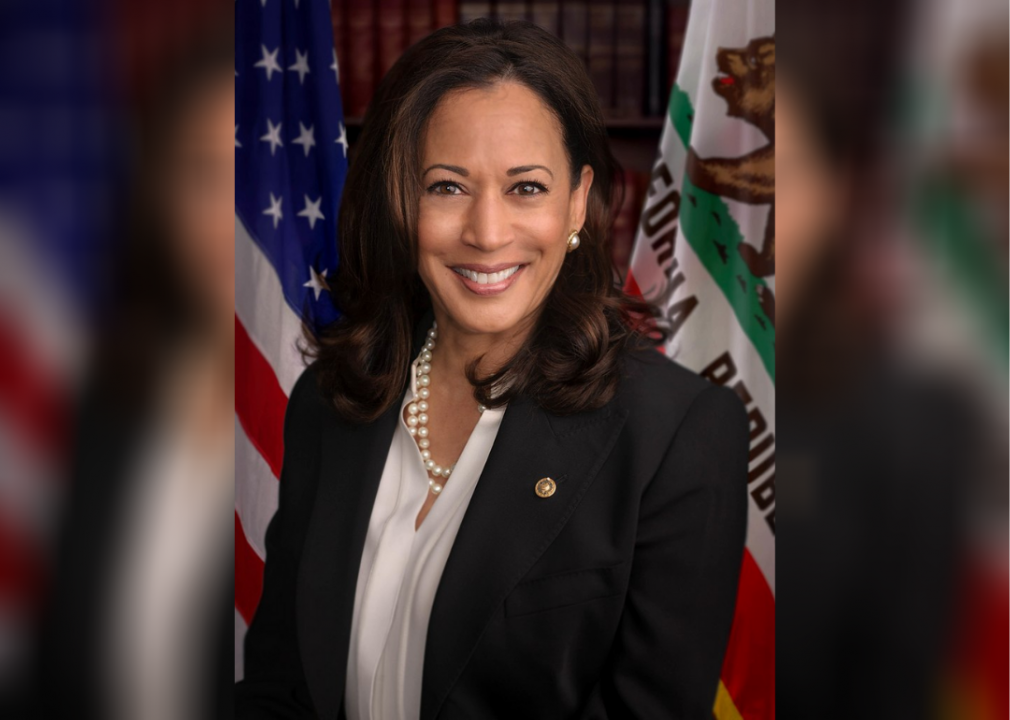50 famous firsts from presidential history
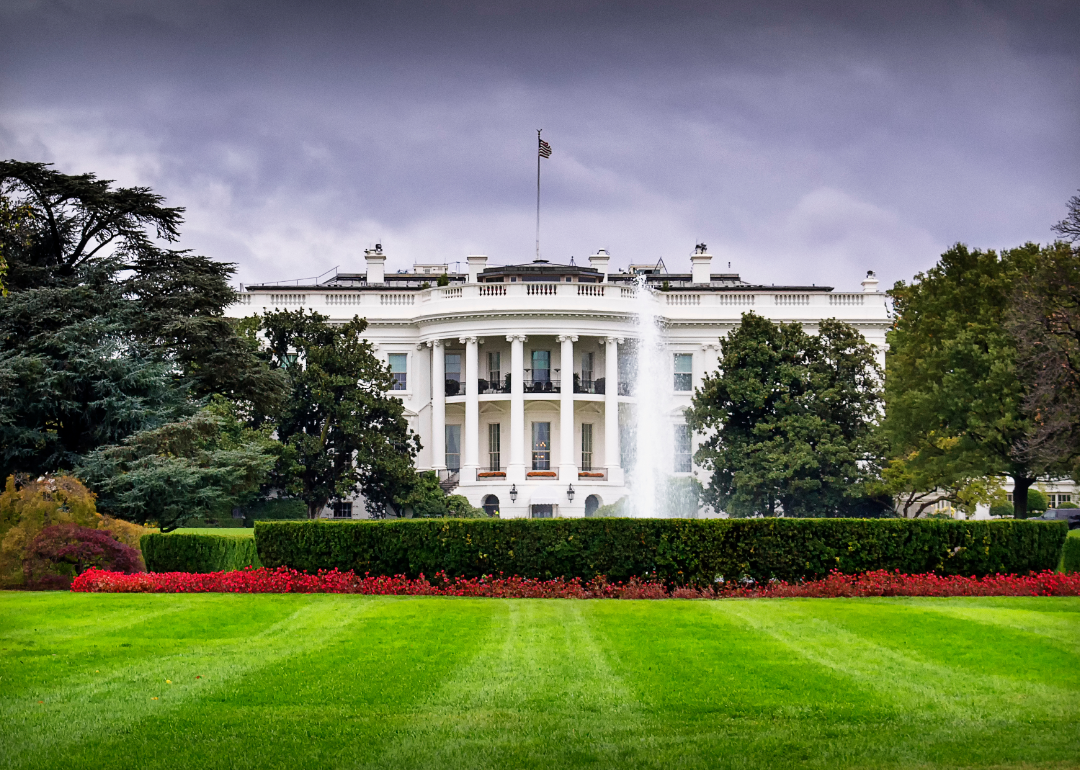
Canva
50 famous firsts from presidential history
Exterior and grounds of White House in Washington, D.C.
George Washington, the country’s first president, won both of his elections unanimously, with every elector casting their vote for him. That’s a far cry from today’s bitterly contested battles. President Washington was followed in office by John Adams, the first resident of the new White House, then still called the President’s House.
Presidential firsts made headlines and history through subsequent administrations. In the early years of the country, precedents were established and earlier flaws in procedures were remedied. A separate vote for the vice president came about in 1804 after a marred election four years earlier, when Thomas Jefferson and Aaron Burr tied and the winner was chosen by the House of Representatives. James Monroe, the last of the Founding Fathers to hold the presidency, became known for what was later called the Monroe Doctrine, whereby the United States established its sphere of influence in the Western Hemisphere and warned Europe in the process.
Presidential firsts can include not just what presidents do in office, but the identity of the presidents themselves. The country has seen two father-son pairs win the White House: first the Adamses and much later the Bushes. Women and candidates of color joined the competition and with the victory of the Biden-Harris ticket, Kamala Harris became the first woman and woman of color to become vice president, while Joe Biden became the oldest person ever to serve as president. And while the Republican and Democratic national conventions choosing each party’s candidate seems like an enshrined practice now, candidates were once chosen differently, and the procedures governing each selection process have changed over the centuries.
While the country began by rallying behind President Washington as the one man to lead the United States, the last two elections were among the most divisive. President Donald Trump became perhaps the most norm-breaking president in history, accruing his own large list of presidential firsts.
Stacker compiled a list of 50 presidential firsts from the founding of the country to the present by looking at government records, official documents, and news and historical reports. Here is a look at some of those milestones over the years.
You may also like: Libertarian, gerrymandering, and 50 other political terms you should know
![]()
Canva
1789: Washington wins unanimously
George Washington, the country’s first president, was chosen by all of the 69 electors of the time. He took the oath of office on April 30, 1789, at Federal Hall in New York City, then walked up Broadway to St. Paul’s Chapel for a service. The chapel later survived the 9/11 terrorist attack that destroyed the World Trade Center nearby. Washington was also unanimously elected for his second term.
Canva
1800: First White House president
President John Adams and his wife, Abigail, became the first residents of the still-unfinished White House on Nov. 1, 1800, just before the election. President Washington had chosen the site for the residence, which was designed by James Hoban, an architect who was born in Ireland. The British set fire to what was called the President’s House in 1814, during the War of 1812. President Theodore Roosevelt named the residence the White House in 1901.
Canva
1804: First separate vote for vice president
Until 1800, the candidate who came in second became the vice president, but that year Thomas Jefferson and Aaron Burr tied at 73 votes each. The House of Representatives elected Thomas Jefferson president and Aaron Burr vice president, but the U.S. Constitution was amended to call for two separate elections. The first to win was George Clinton, the governor of New York, who ran with President Jefferson.
Canva
1806: First child born in the White House
Thomas Jefferson’s grandson, James Madison Randolph, became the first child to be born inside the White House while his mother was visiting. The child was the second son of Martha Jefferson Randolph and Thomas Mann Randolph. President Jefferson’s wife, Martha, died before his election and his daughter Martha sometimes acted as the first lady of what was still called the President’s House.
Canva
1817: Last of the Founding Fathers
James Monroe was the last of the Founding Fathers to be elected president. He became known for the Monroe Doctrine, a name given after his death to a policy that he articulated in his 1823 message to Congress when he warned Europe not to interfere in the Western Hemisphere. The doctrine was part of the break from Europe, with its idea of separate spheres of influence for the United States and Europe.
You may also like: Do you know the mayors of these major cities?
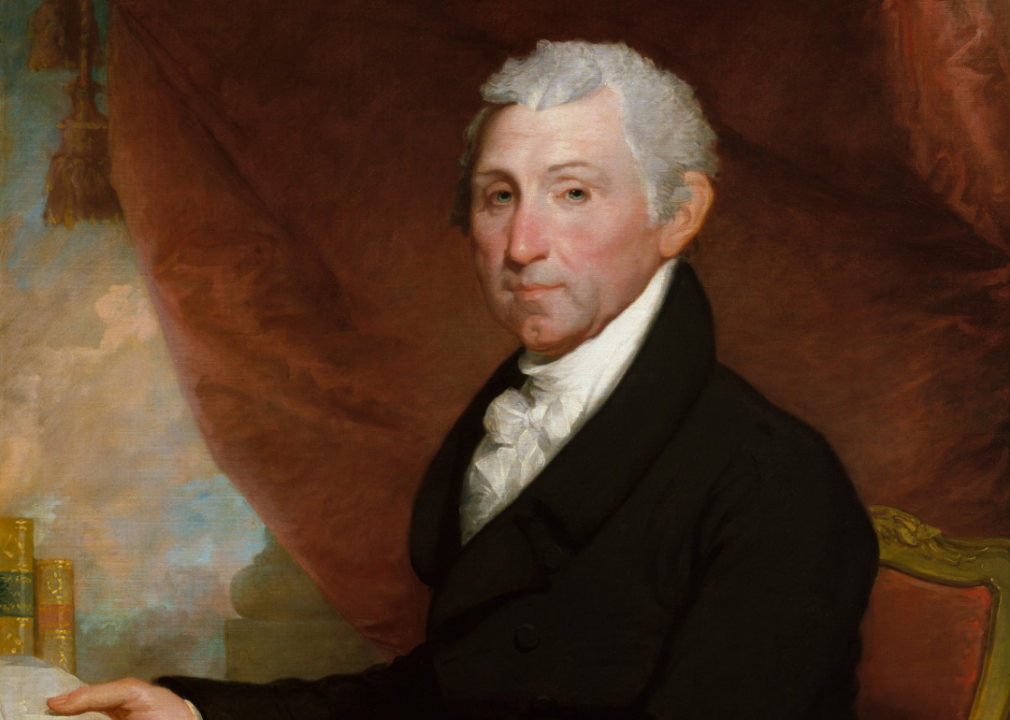
Canva
1821: First oath of office to be postponed
When James Monroe’s second inauguration fell on a Sunday, he postponed it by one day—from March 4 to March 5, 1821—after he consulted with justices of the U.S. Supreme Court. Similarly in 1849, Zachary Taylor declined to take the oath of office on the Christian Sabbath and moved his inauguration until the next day. The 20th Amendment, ratified in 1933, changed the date of the inauguration from March 4, the day most had taken place, to Jan. 20.
Ralph Eleaser Whiteside Earl // Wikimedia Commons
1824: First president to lose popular and electoral votes
John Quincy Adams became the country’s sixth president, but only after a four-way race in 1824 was decided by the House of Representatives early the next year. Running were John Quincy Adams, Andrew Jackson, William Crawford, and Henry Clay. Andrew Jackson won both the popular and electoral votes, but he failed to get a majority and accused his competitors of stealing the election.
Southworth & Hawes // Wikimedia Commons
1825: First son of previous president to serve
When John Quincy Adams took the oath of office in 1825, he followed his father, the country’s second president, into the presidency. His father is reported to have said: “No man who ever held the office of president would congratulate a friend on obtaining it.” The only other father and son to win the presidency were George H.W. Bush and George W. Bush, the country’s 41st and 43rd presidents.
Canva
1831: First convention to nominate candidates for president
The first candidate to be nominated at a convention was William Wirt of Maryland for the Anti-Masonic Party in 1831. The major parties then held their own conventions for the 1832 election, with the Democrats or Democratic-Republicans choosing Andrew Jackson a second time, while the National Republicans or Whigs nominated Henry Clay. All of the conventions were held in Baltimore.
Southworth & Hawes // Wikimedia Commons
1840: First party platform
The Democratic Party adopted nine resolutions for the first party platform. They emphasized that the federal government had limited powers “derived solely from the constitution.” They opposed a national bank, left slavery to be decided by the states, and believed taxes should only cover the expenses of the government. The Whig candidate, William Henry Harrison, beat President Martin Van Buren in the election.
Gregory Patrick Colvin // Wikimedia Commons
1841: First president to die in office
President William Henry Harrison became the first president to die in office on April 4, 1841, only one month after his inauguration. The official cause of death was pneumonia, but later investigations point possibly to typhoid fever. His was the shortest presidency at 31 days, but he delivered the longest inaugural address at 8,445 words. The shortest was President Washington’s second inaugural address, at 135 words.
You may also like: 25 terms you should know to understand the gun control debate
Canva
1841: First VP to assume presidency due to death
John Tyler—the Tyler of the campaign slogan “Tippecanoe and Tyler Too”—became president on the death of his predecessor, but later had a falling out with the Whigs. As a result, his detractors referred to him as “His Accidency.” He helped to create the Confederacy and was a member of the Confederate House of Representatives when he died in 1862.
Mathew Brady // Wikimedia Commons
1844: First dark horse candidate
The Democratic convention of 1844 reached an impasse between two candidates: former President Martin Van Buren and Senator Lewis Cass of Michigan. James K. Polk, the Speaker of the House of Representatives, was chosen on the ninth ballot and became known as the first dark horse candidate.
Mathew Brady // Wikimedia Commons
1850: Last president not a Democrat or Republican
Millard Fillmore, a Whig, was the last president to serve who was neither with the Democratic Party nor the Republican Party. Elected vice president in 1848, he became president two years later when Zachary Taylor died. During his presidency, the country was splitting over slavery. He failed to be renominated by his own party.
Mathew Brady // Wikimedia Commons
1857: First and only unmarried president
The only president who never married, James Buchanan was elected immediately before the Civil War and presided over the country as it splintered. He failed to grasp the deep political divides over slavery that were pulling the country apart. The Democratic Party separated into northern and southern factions, and Abraham Lincoln had a sure victory as the Republican nominee.
You may also like: Iconic buildings that were demolished
Moses Parker Rice // Wikimedia Commons
1865: First president to be assassinated
President Abraham Lincoln was shot on April 14, 1865, at Ford’s Theatre in Washington D.C. He was unconscious through the night and died the next morning. His assassin, John Wilkes Booth, a 26-year-old actor and Confederate supporter, broke his leg jumping to the stage in an effort to escape, fled, and was treated in Maryland by Dr. Samuel Mudd. Booth was later tracked down by Union soldiers in Virginia and killed.
Gibson, James F. // Wikimedia Commons
1866: First Congressional override of note
Radical Republicans in Congress, a faction of the Republican Party, passed the Civil Rights Act of 1866, overriding a veto by President Andrew Johnson. It was the first override by Congress on important legislation. The law was intended to protect enslaved people freed after the Civil War, and declared that everyone born in the United States, with the exception of Native Americans, were “hereby declared to be citizens of the United States.” The first override of a presidential veto took place earlier, in 1845, over whether President John Tyler could authorize the construction of ships for the Revenue Marine Service, now the Coast Guard, without Congress approving appropriations.
Mathew Brady // Wikimedia Commons
1868: First presidential impeachment
Radical Republicans in 1867 put Southern states under military rule and placed restrictions on the president. When President Andrew Johnson dismissed his secretary of war, Edwin M. Stanton, the House accused him of violating one of those restrictions, the Tenure of Office Act, and on Feb. 24, voted for 11 articles of impeachment against him. He was tried by the Senate and acquitted by one vote.
Bradley & Rulofson // Wikimedia Commons
1872: First woman to run for president
Victoria Claflin Woodhull was the first woman to run for president as the candidate for the Equal Rights Party. Her party chose Frederick Douglass as her running mate but he declined the nomination and campaigned for one of her opponents, the Republican incumbent, President Ulysses S. Grant. She also was the first woman to own a Wall Street brokerage company and to start a weekly newspaper.
George G. Rockwood
1872: First candidate to die before Electoral College meets
Newspaper editor and publisher Horace Greeley, the Democratic Party’s candidate, lost to President Ulysses S. Grant, who was running for reelection in the 1872 election. Greeley would have gotten 66 electoral votes, but he died on Nov. 29, 1872, before the Electoral College met. His votes were divided among four people. The president won reelection with 286 electoral votes.
You may also like: States that have accepted the most refugees in the past decade
Canva
1876: First time justices decide an election
The 1876 race between Rutherford B. Hayes and Samuel Tilden devolved into a battle among rival electors from Florida, Louisiana, Oregon, and South Carolina. Congress created a commission to resolve the dispute that was made up of Supreme Court justices, senators, and representatives, and it chose President Hayes.
Brady-Handy Photograph Collection // Wikimedia Commons
1881: Last of the ‘log cabin’ presidents
James Garfield was the last president born in a log cabin, in Ohio in 1831, when Ohio had been a state for less than 30 years. His father died before he had turned 2 years old, but his mother survived to see him in the White House, the first president’s mother to attend an inauguration.
James Grant Wilson // Wikimedia Commons
1881: First president who was a clergyman
President Garfield also was the first president who was a preacher. He was baptized at 18 in 1850 and preached until he turned to politics, elected to the Ohio Senate in 1859 and to Congress in 1862. He was a member of the Disciples of Christ and attended the Vermont Avenue Christian Church in Washington D.C.
Mathew Brady // Wikimedia Commons
1881: First presidential library
President Garfield’s wife, Lucretia, preserved his papers and correspondence after his death, creating the first presidential library. His collection consists of correspondence, diaries, speeches, records of his Civil War military service, and other documents, according to the Library of Congress. The president who followed him, Chester Arthur, did not follow precedent, however. He burned most of his papers before his death.
Haynes, F. Jay // Wikimedia Commons
1881: First ‘so help me god’
Chester Arthur became president after President Garfield was shot on July 2, 1881, and died two months later on Sept. 19, 1881. President Arthur took the oath of office twice, first in New York immediately after the assassination and again several days later in the Capitol. Both times he added the phrase, “So help me, god.” Presidents since then have continued to include the phrase.
You may also like: Cities before conflict: what it was like to visit Juarez, Tehran, and 13 other afflicted places
George Grantham Bain // Wikimedia Commons
1885: First president to serve separate terms
President Grover Cleveland, the first Democrat elected after the Civil War, was the only president to return to the White House for a second term four years after his first. He served from 1885 until 1889 and from 1893 until 1897. He also was the only president to get married while in the White House. He married 21-year-old Frances Folsom in June 1886.
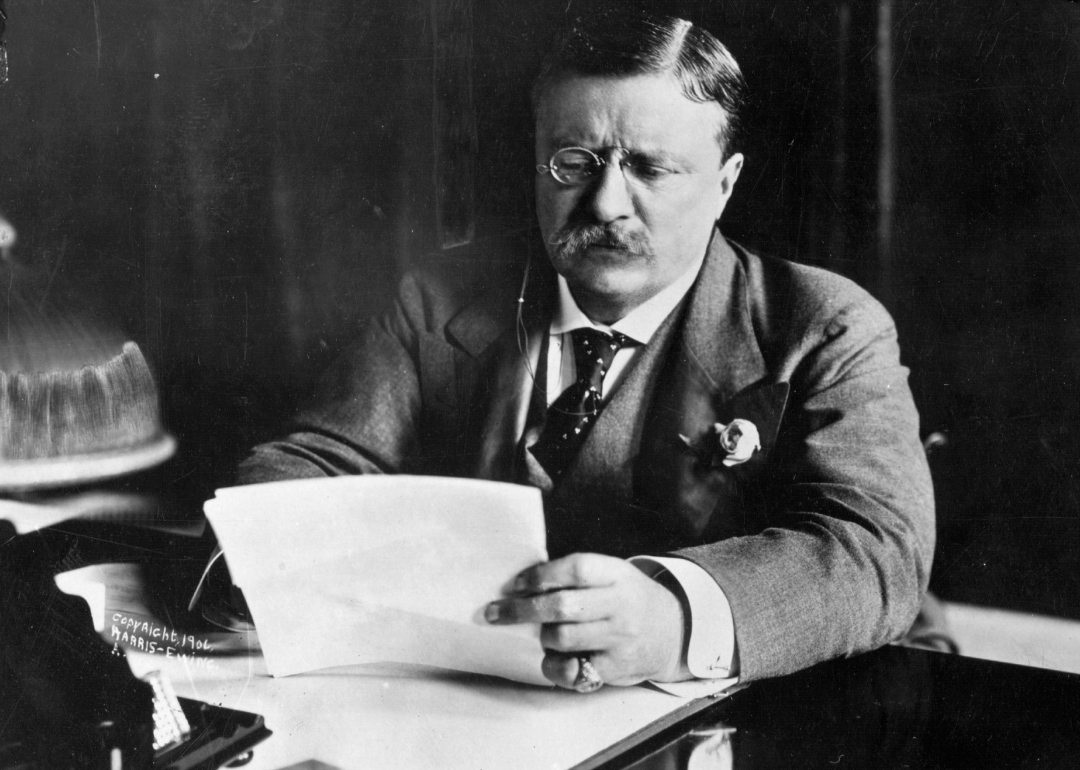
Hulton Archive // Getty Images
1901: Youngest president to assume office
Theodore Roosevelt became president when he was only 42 years old, after the assassination of President William McKinley. A Rough Rider during the Spanish-American War and a former New York governor, he also was the first president to win a Nobel Peace Prize in 1906 for his efforts to end the Russo-Japanese War. John F. Kennedy was the youngest president to be elected to office, as opposed to ascending to the presidency as a result of the vacancy of office, at age 43 on his inauguration day.
National Liberty Party // Wikimedia Commons
1904: First Black American to receive presidential nomination
George Edwin Taylor, the son of an enslaved man, ran for president as the candidate of the National Negro Liberty Party, sometimes known as the National Liberty Party. Taylor was a journalist and politician who was an alternate delegate-at-large at the 1892 Republican National Convention. The National Negro Liberty Party distrusted Theodore Roosevelt and questioned his allegiance to the betterment of African Americans.
Harris & Ewing, Inc. // Wikimedia Commons
1909: First president and chief justice
William Howard Taft is the only person to have served both as the country’s president and as the chief justice of the U.S. Supreme Court. He was elected the 27th president in 1909 and served four years. He became the 10th chief justice in 1921 and served in that position until 1930.
Bain News Service // Wikimedia Commons
1924: Longest political convention
Democrats meeting in New York City’s Madison Square Garden took 16 days and 103 ballots to choose a candidate. It was the longest political convention in presidential history. New York Governor Al Smith, a liberal Catholic who opposed Prohibition, faced conservative William G. McAdoo of California, who received support from the Ku Klux Klan. In the end, the Democrats chose lawyer John Davis, who lost to President Calvin Coolidge.
You may also like: Most dangerous countries for journalists
Bain News Service // Wikimedia Commons
1928: First Catholic to receive presidential nomination
New York Governor Al Smith was chosen as the Democrats’ candidate in 1928, but he had to contend with the Ku Klux Klan and other anti-Catholic sentiments. The first Catholic to receive a presidential nomination from a major political party, he lost to Republican Herbert Hoover. Today a dinner in his honor is held each year in New York City to raise money for charity. A political roast, it has attracted such presidential nominees as George W. Bush, Barack Obama, John McCain, and Hillary Clinton.
United States Government // Wikimedia Commons
1933: First four-term president
Elected during the Great Depression, Franklin Delano Roosevelt famously told Americans, “The only thing we have to fear is fear itself.” During his four terms, FDR created the New Deal to help businesses and farms recover, as well as a work relief program. He signed Social Security into law and established new controls over banks. He contracted polio when he was 39 and afterward used a wheelchair, although he hid it from the public, even during the high-exposure years of the Second World War.
U.S. National Archives and Records Administration // Wikimedia Commons
1956: First televised presidential debate
The first presidential debate to be televised probably did not feature who you thought it did. Rather than Richard Nixon and John F. Kennedy, the debate highlighted Democratic candidate Adlai Stevenson and Republican President Dwight Eisenhower, represented by surrogates. Those surrogates for the Nov. 4, 1956, matchup were both women: former first lady Eleanor Roosevelt for the Democrats and Senator Margaret Chase Smith of Maine for the Republicans.
Associated Press // Wikimedia Commons
1960: First televised presidential debate featuring candidates
Richard Nixon and John F. Kennedy appeared in the first televised debate that featured the candidates themselves. It introduced American voters to a new political phenomenon. Reporters at the time thought the match was a draw and only later came to the agreement that the television cameras had been less flattering to Richard Nixon.
United States Government // Wikimedia Commons
1960: First Catholic president to win election
John F. Kennedy won the 1960 presidential race despite some fears among some Americans that he would be more loyal to the pope than to the American Constitution. In a speech to Protestant ministers, he said: “I believe in an America where the separation of church and state is absolute, where no Catholic prelate would tell the president (should he be Catholic) how to act, and no Protestant minister would tell his parishioners for whom to vote.”
You may also like: Youngest and oldest presidents in U.S. history
Universal Studios // Wikimedia Commons
1964: First woman to seek Republican nomination
Senator Margaret Chase Smith of Maine, who had represented Dwight Eisenhower in the 1956 presidential debate by proxy, sought the nomination for herself. She was one of the earliest critics of Wisconsin Senator Joe McCarthy and his “Red Scare” tactics. Instead, the party chose Senator Barry Goldwater of Arizona, who was crushed by President Lyndon Johnson.
Thomas J. O’Halloran // Wikimedia Commons
1972: First Black woman to seek nomination
Shirley Chisholm, already the first Black woman to win a seat in Congress where she served for seven terms, campaigned for the Democratic presidential nomination with the slogan, “Unbought and Unbossed.” She was the daughter of immigrants from Barbados and Guyana. She lost to Senator George McGovern, who was beaten by Richard Nixon in the election.
Karl Schumacher // Wikimedia Commons
1974: First president never elected to presidency, vice-presidency
Gerald Ford assumed the presidency after the resignation of Richard Nixon during the Watergate scandal. Ford was the Republican minority leader in the House of Representatives when President Nixon chose him to replace Vice President Spiro Agnew, who was forced out over a separate scandal. President Ford was never elected to either position. He served until 1976 when he lost an election bid to Democrat Jimmy Carter. While in office, he pardoned President Nixon, a controversial decision.
Trikosko, Marion S. // Wikimedia Commons
1976: First U.S. Naval Academy graduate
President Jimmy Carter was the first in office to have graduated from the U.S. Naval Academy at Annapolis and attended the U.S. Navy Submarine School. Carter focused on human rights, later founded the Carter Center, and won a Nobel Peace Prize in 2002. Another Annapolis graduate, Sen. John McCain, ran for the presidency twice—in 2000 and 2008—but lost both times.
Reagan Library // Wikimedia Commons
1980: First actor to become president
Ronald Reagan, previously the governor of California and an actor who appeared in 53 movies and served as president of the Screen Actors Guild, beat President Carter. He ran on the issues of inflation and the American hostage crisis in Iran. (The hostages were released the day President Carter left office.) President Reagan, whose political views turned from liberal to conservative, established the modern conservative vision of small government, despite the actual effect of some of his policies. While he did decrease spending on public services like welfare, he actually increased the overall size of the government by growing military spending.
You may also like: Most and least popular governors in America
UTA Libraries Digital Gallery // Wikimedia Commons
1984: First woman on a presidential ticket
Geraldine Ferraro, a congresswoman from New York, became the first woman to run for vice president on a major party’s ticket. She joined Democratic Senator Walter Mondale to try to unseat Ronald Reagan and George Bush, and they were defeated. During the vice-presidential debate, Vice President Bush was criticized for trying to patronize her.
White House photo // Wikimedia Commons
1996: First Democrat to serve a second term since FDR
President Bill Clinton won a second term in 1996, the first Democrat to do so since Franklin D. Roosevelt. His second term was marred by impeachment proceedings related to his affair with intern Monica Lewinsky. He was tried in the Senate for perjury and obstruction of justice but was found not guilty. His popularity remained high despite the impeachment.
USCapitol // Wikimedia Commons
2000: First presidential race settled by the Supreme Court
The U.S. Supreme Court ordered a Florida recount to end the close and controversial race for president between George W. Bush and Vice President Al Gore. The counting had been marred by so-called hanging chads, punch-outs that did not detach, and other problems. In the end, George W. Bush was declared the winner, though many of the former vice president’s supporters thought the decision unfair.
Therealbs2002 // Wikimedia Commons
2008: First woman to run on Republican ticket
Alaska Governor Sarah Palin was the first woman on a Republican ticket, running with Senator John McCain against Senators Barack Obama and Joe Biden. The McCain-Palin ticket lost, and Senator McCain reportedly later regretted picking her. She was not invited to attend his funeral in 2018.
Center for American Progress Action Fund // Wikimedia Commons
2008: First Black president elected
Senator Barack Obama became the first Black man to win the presidency in 2008. The senator from Illinois encountered racism during his run that continued throughout his presidency. A so-called “birther” campaign suggested without any evidence that he had been born outside the United States and was therefore not eligible for the presidency. While in office, his signature accomplishment was getting the Affordable Care Act, or Obamacare, through Congress.
You may also like: 50 ways the news industry has changed in the last 50 years
Gage Skidmore // Wikimedia Commons
2016: First president to win on first political run
Donald Trump surprised many in the country when he won the White House on his first run for political office. A political outsider, he promised to upend Washington norms—and in a way, he did—but he also was a contentious leader accused of racism and xenophobia and whose last year in office was marred by the deadly coronavirus. He is one of three presidents to be impeached by the House of Representatives, and the only president to be impeached twice.
Gage Skidmore // Wikimedia Commons
2016: First woman to win a major party nomination for president
Hillary Rodham Clinton, a former first lady, senator, and secretary of state, became the first woman to win a major party nomination when she was picked to run against Donald Trump. She suffered a setback when Russians hacked her campaign and the Democratic National Committee, and despite winning the popular vote in the general election by nearly 3 million votes, lost the Electoral College and the election.
White House Website // Wikimedia Commons
2020: Oldest president to win office
Joe Biden, who was born in 1942 during World War II, turned 78 on Nov. 20, 2020, making him, on inauguration day Jan. 20, 2021, the country’s oldest president. Formerly, it was Ronald Reagan, who left office in 1989 at the age of 77, who was America’s oldest president. “Hopefully, I can demonstrate that … with age comes wisdom and experience that can make things a lot better,” Biden said of his age.
Lorie Shaull // Wikimedia Commons
2020: First president to break 75 million votes
Joe Biden won 81.3 million votes, breaking the record set by President Barack Obama, who got 69.5 million in 2008. President Trump also bested President Obama’s record, with more than 74 million, an indication of how divided the country was. The 2020 election saw record turnout, the highest since 1900, with 159.8 million Americans casting ballots.
Office of Senator Kamala Harris // Wikimedia Commons
2020: First woman of color to be elected VP
Senator Kamala Harris became the first woman and the first woman of color to be elected vice president. Her mother immigrated from India and her father from Jamaica. Vice President Harris served as a senator from California and as the state’s attorney general before President Biden chose her as his running mate.
You may also like: Political cartoons from the last 111 years
